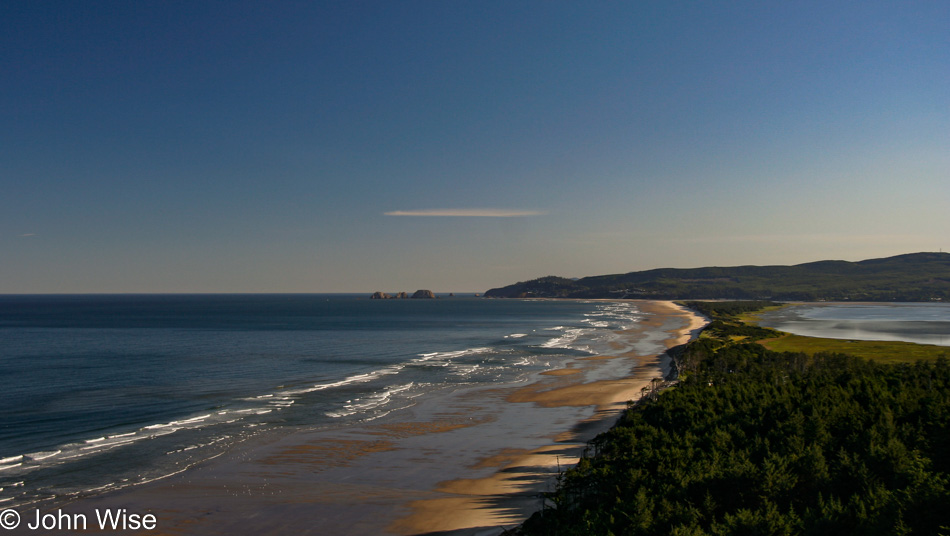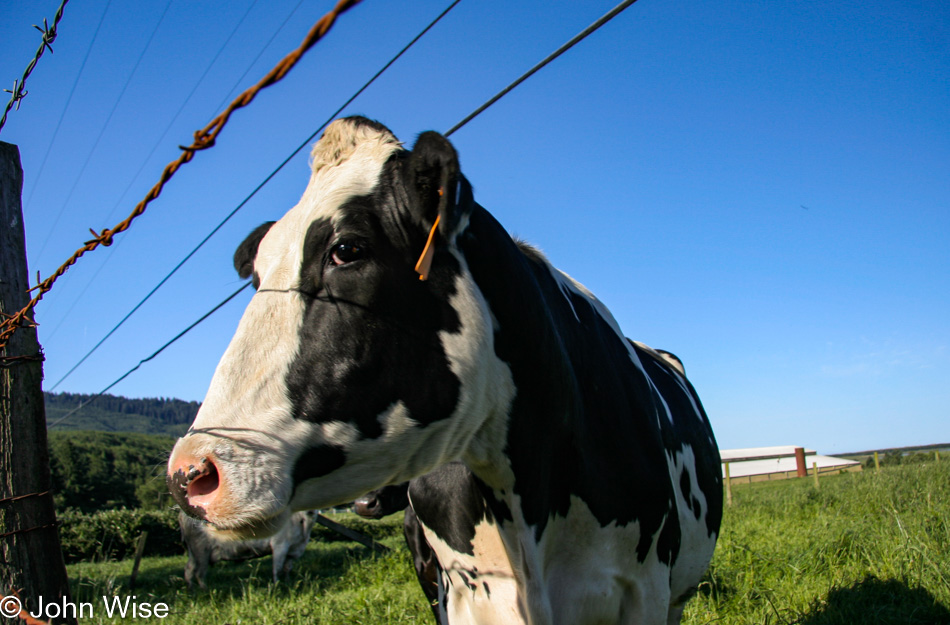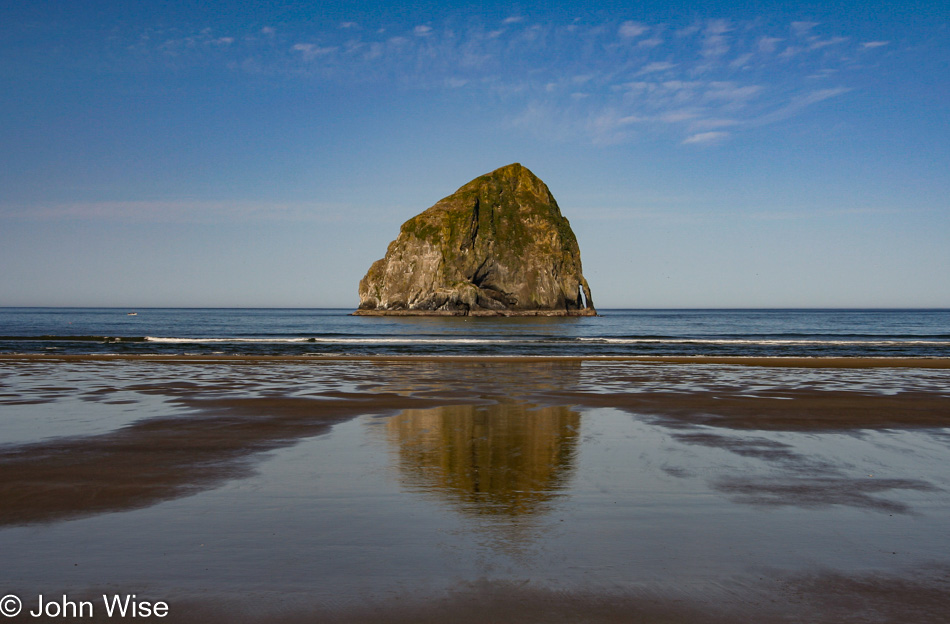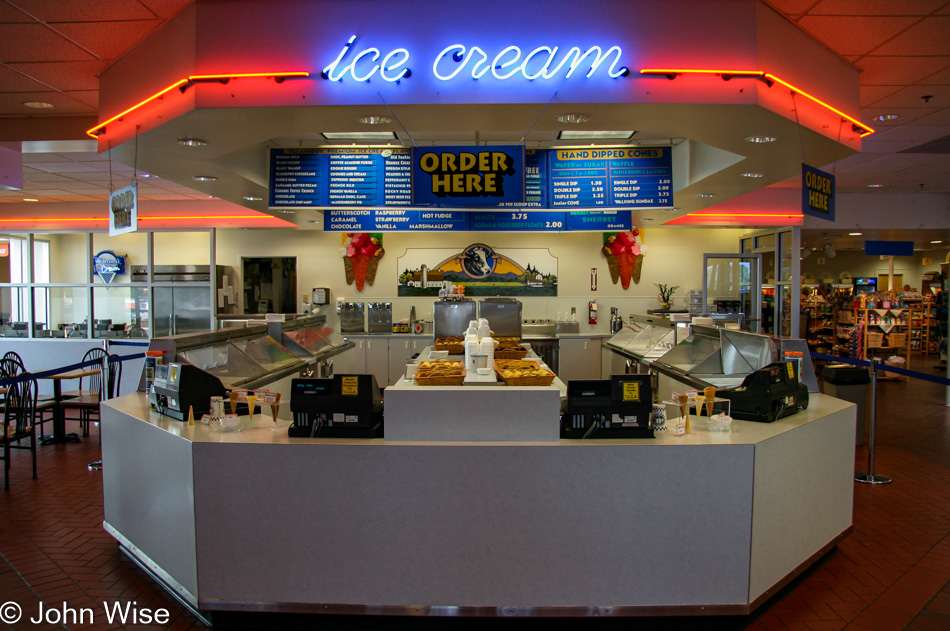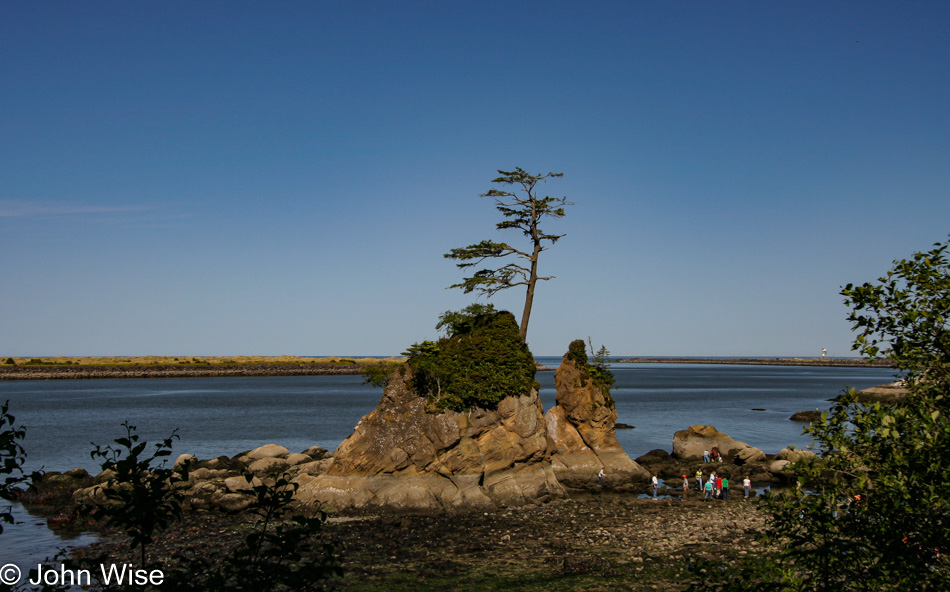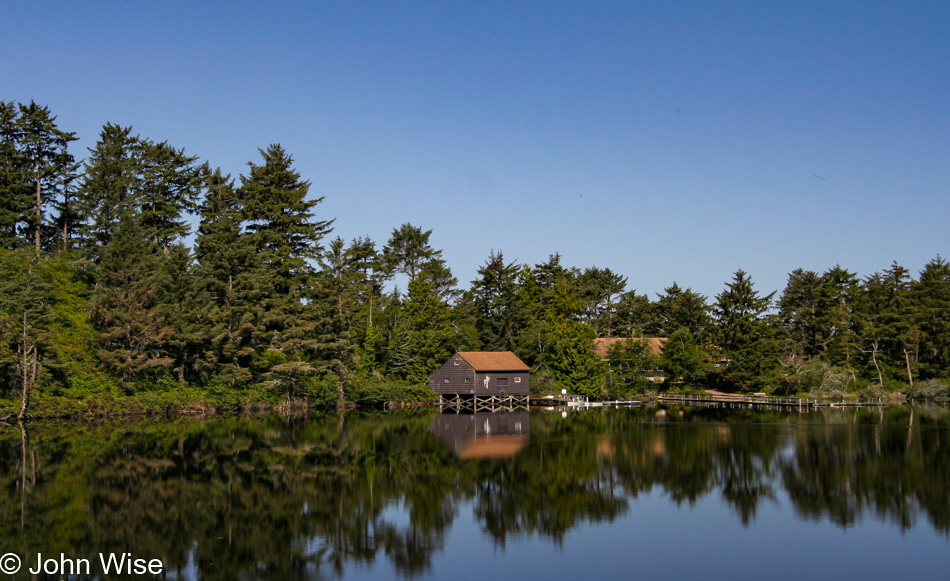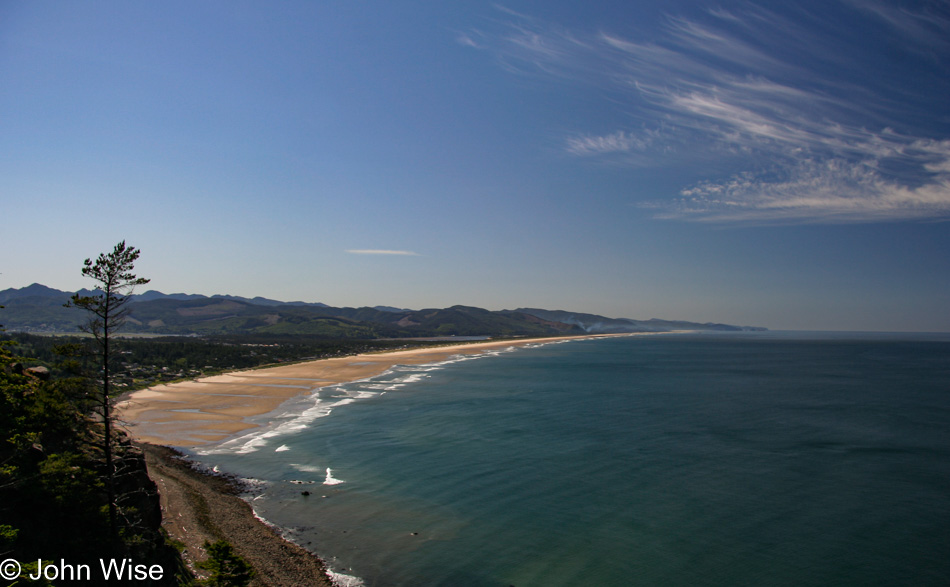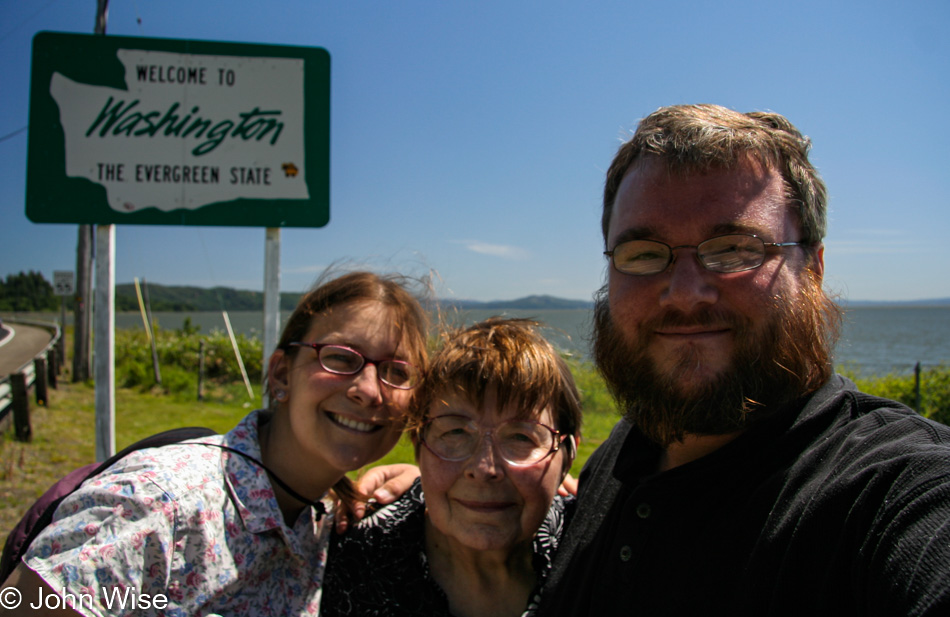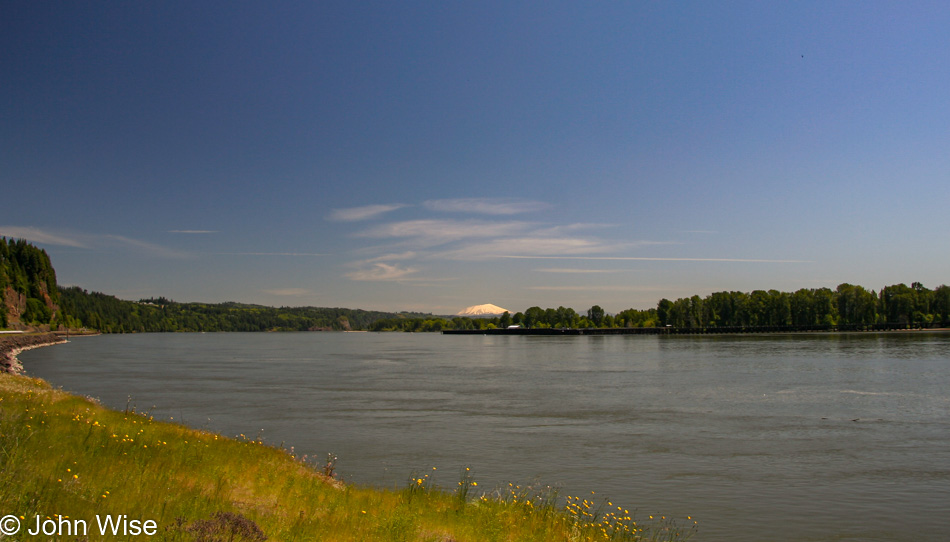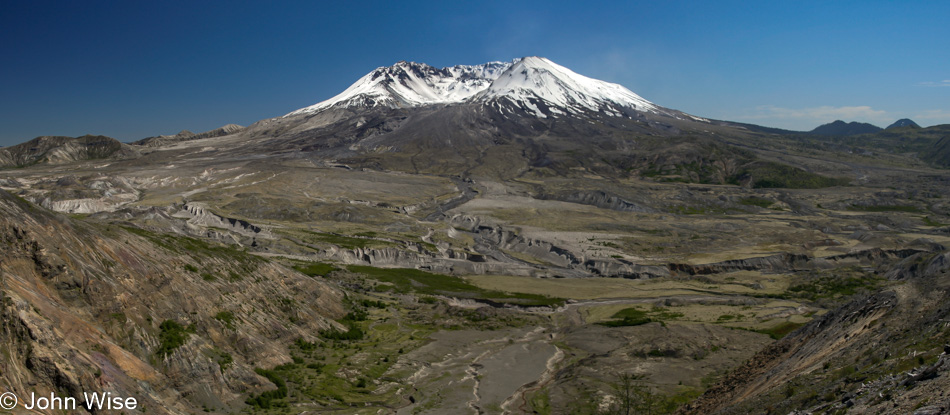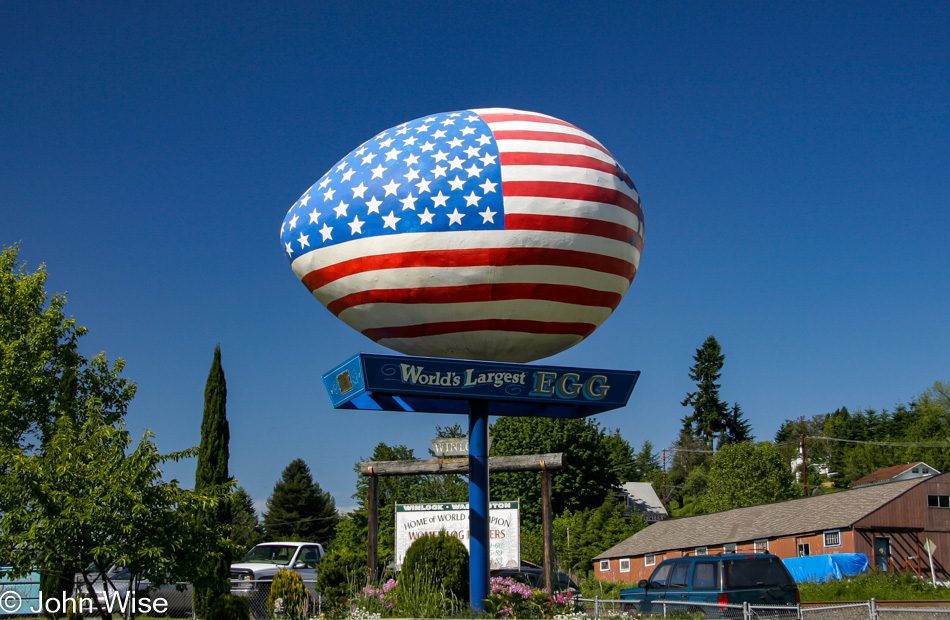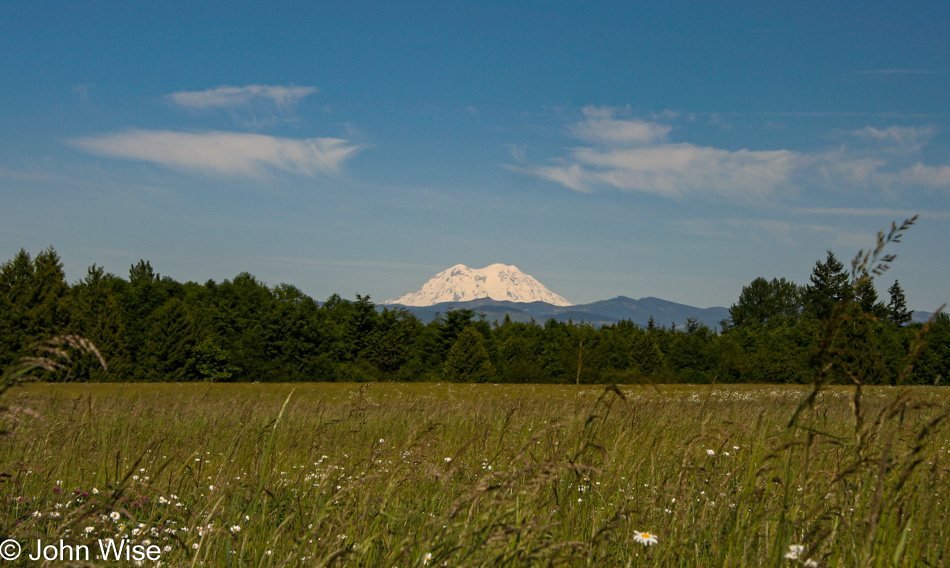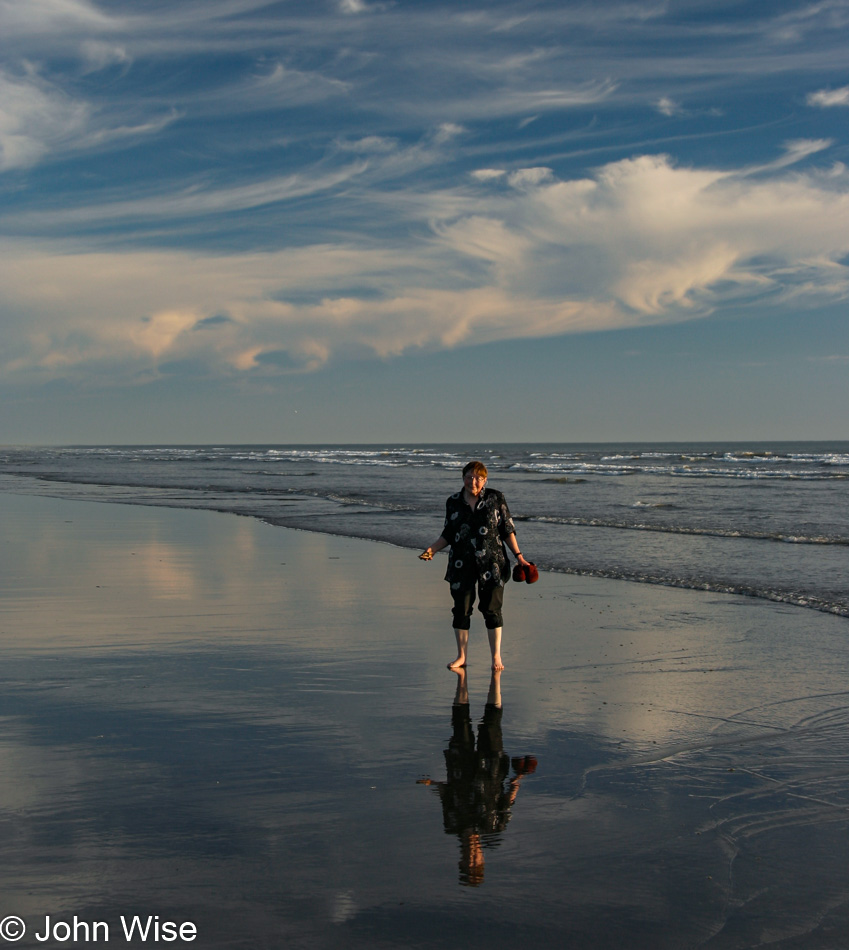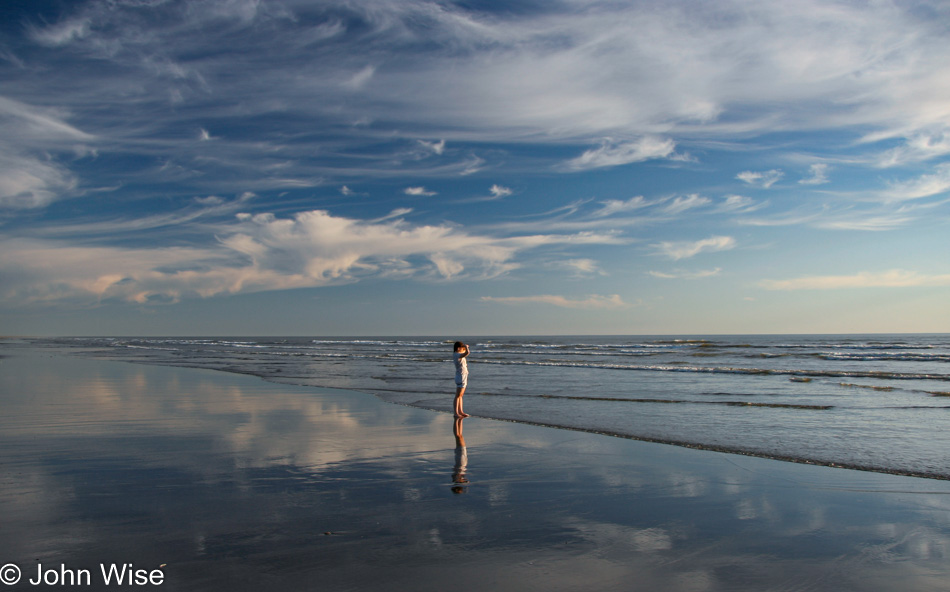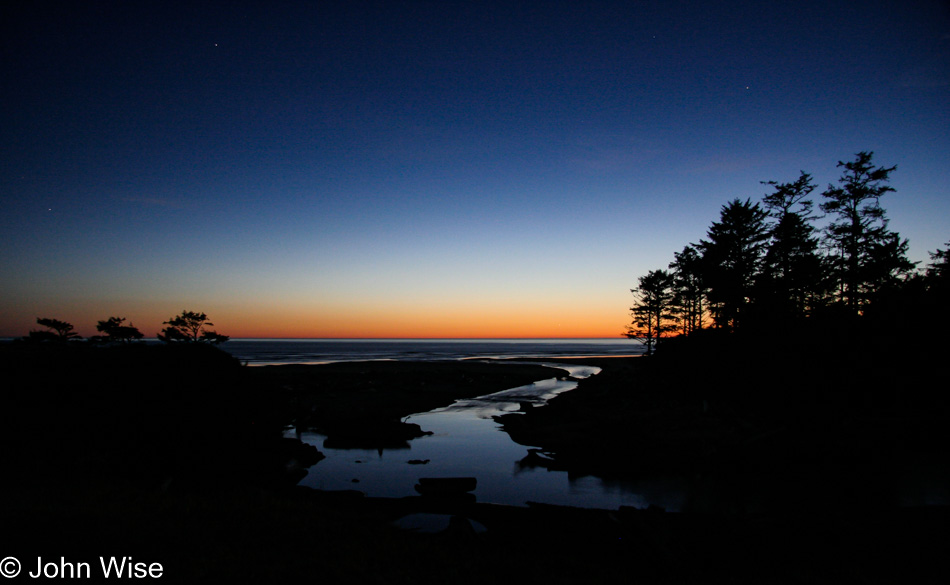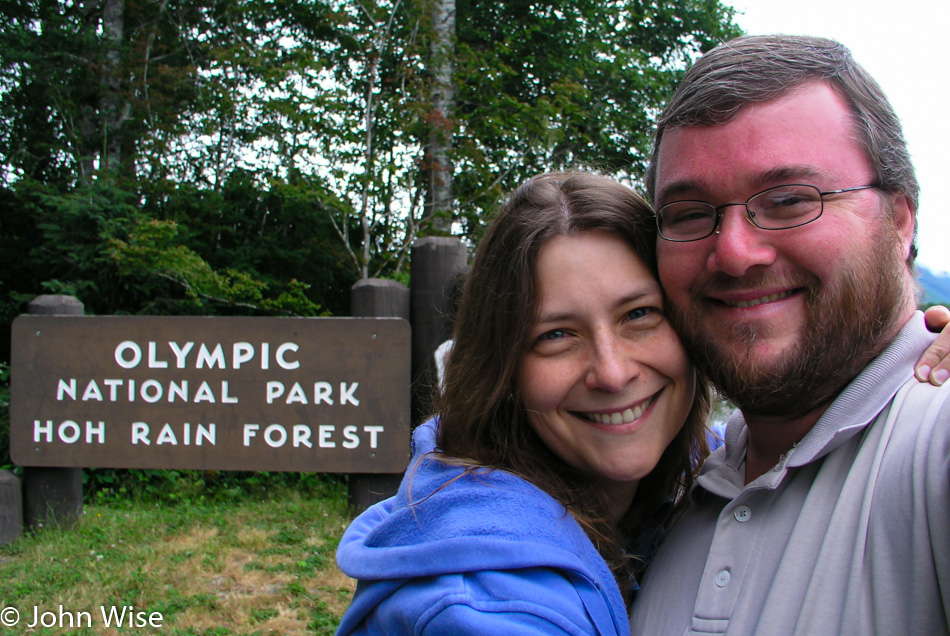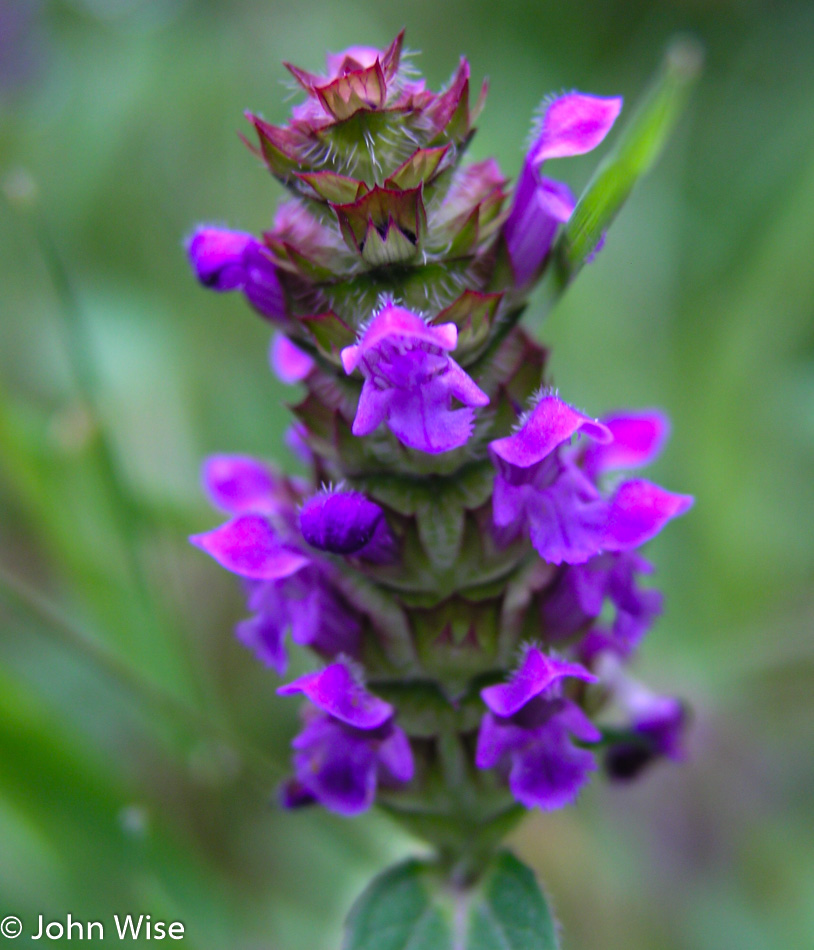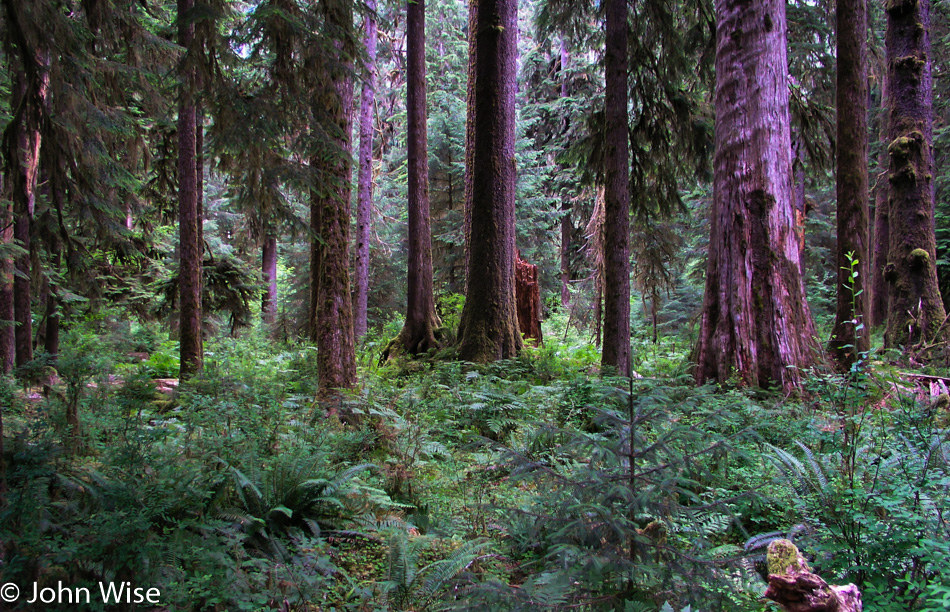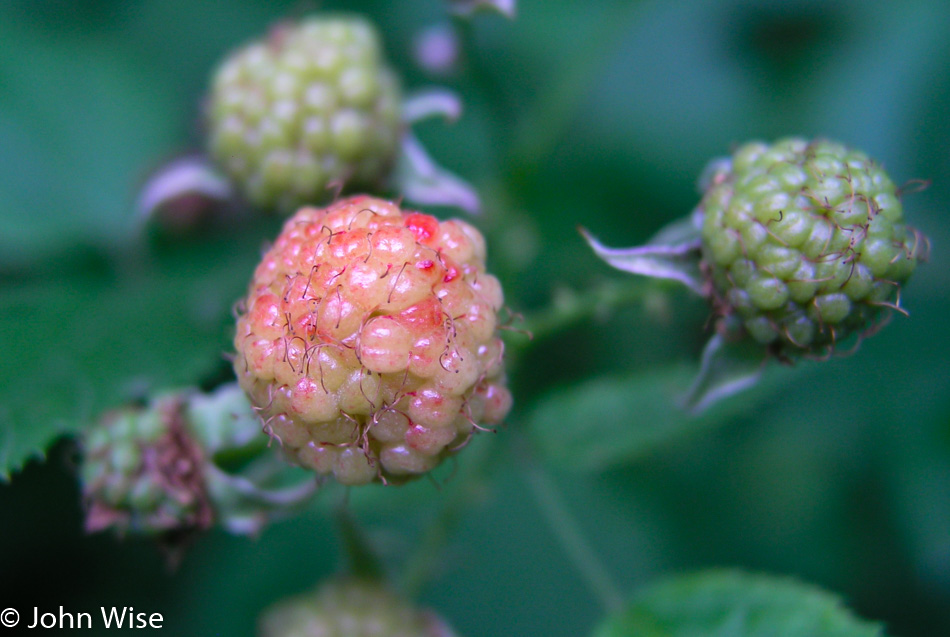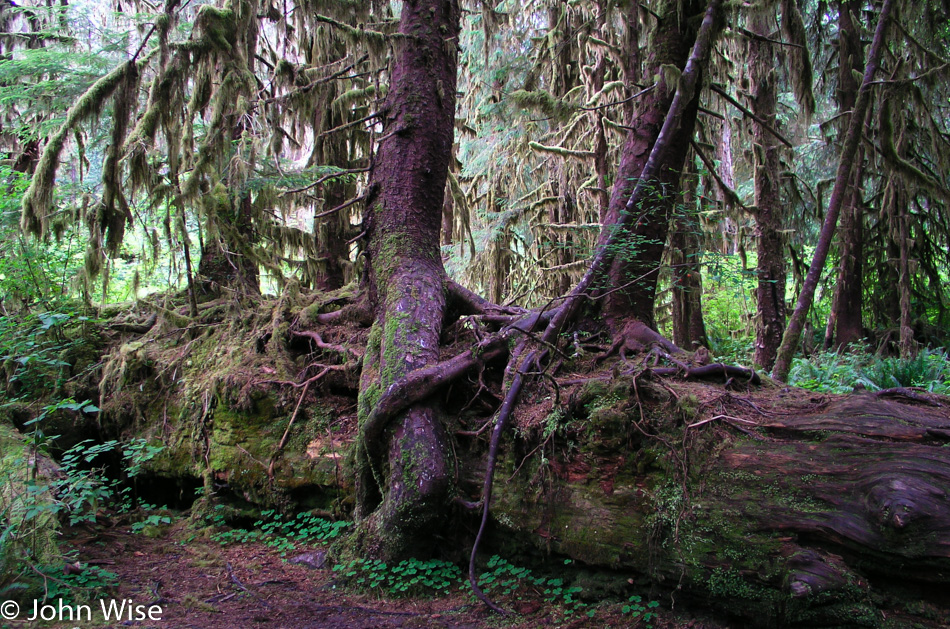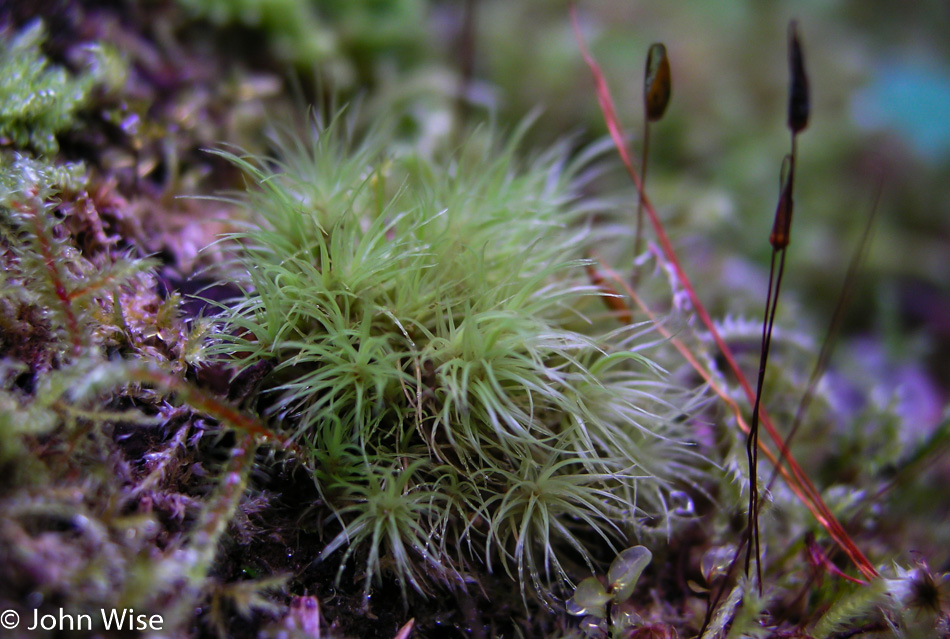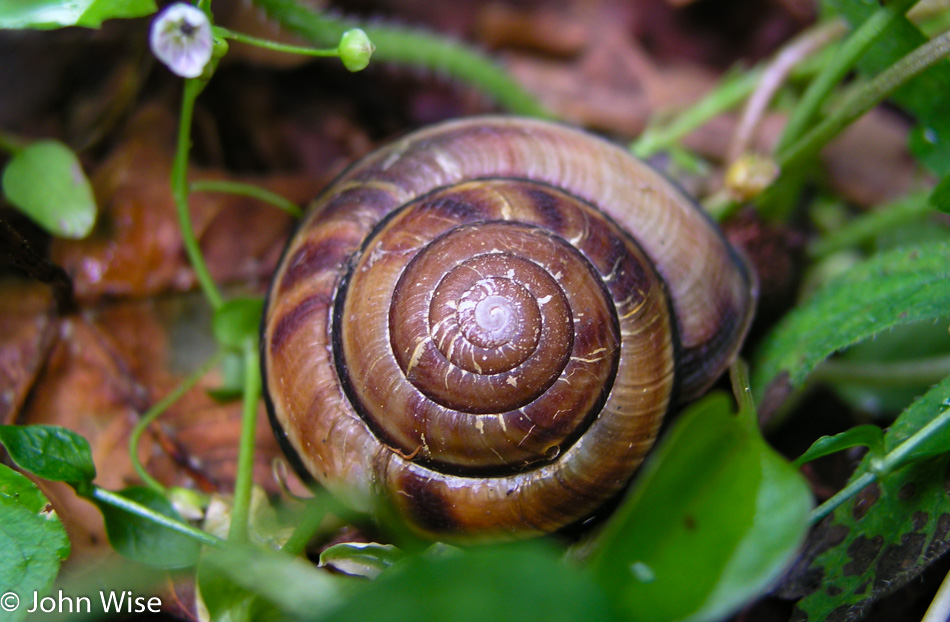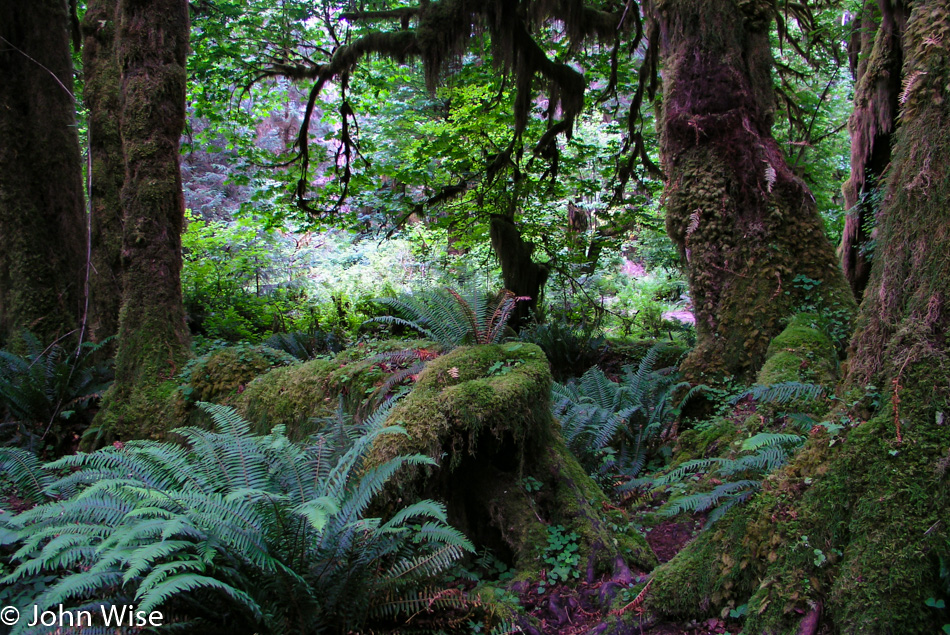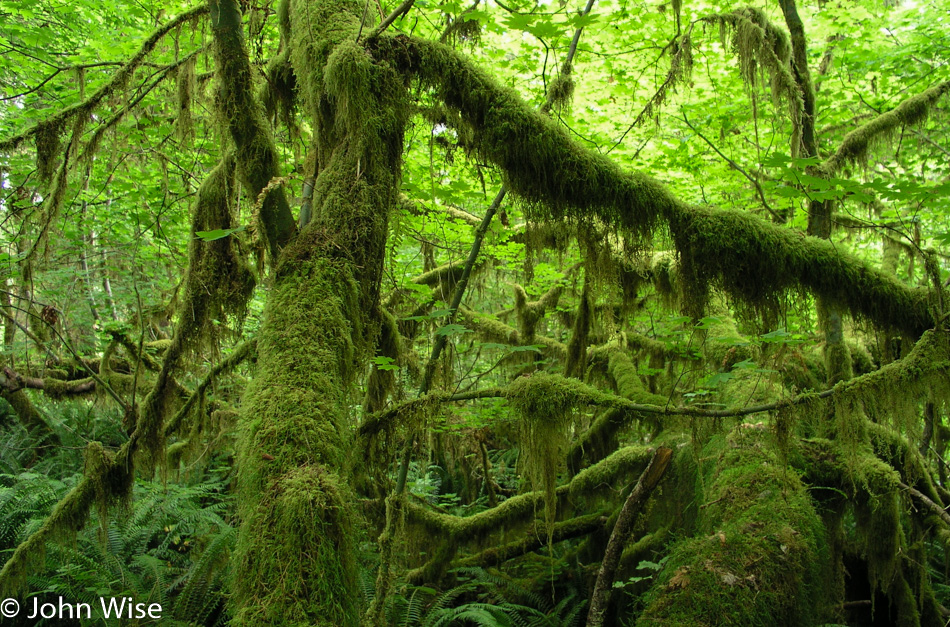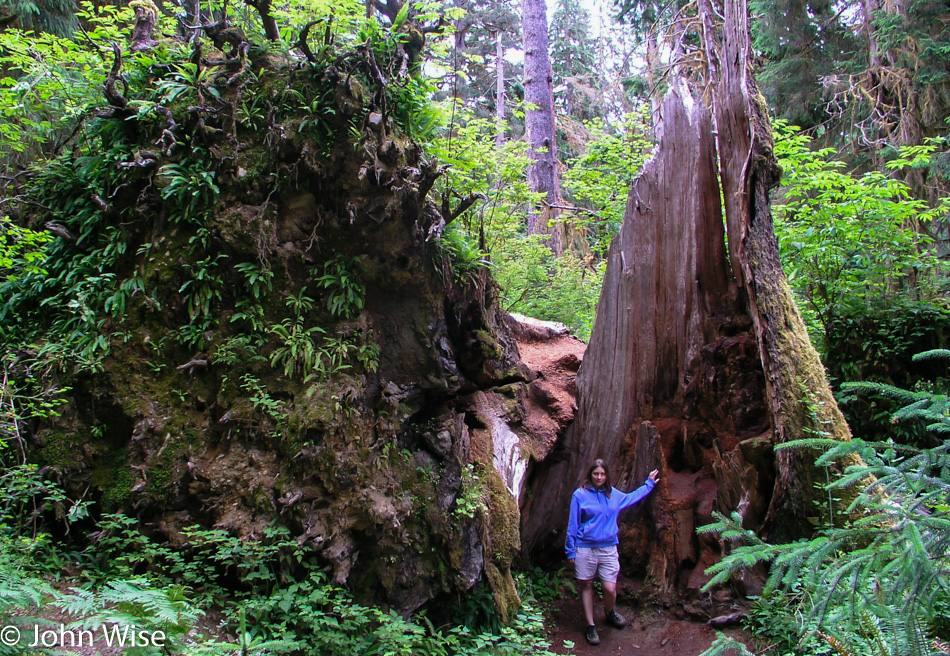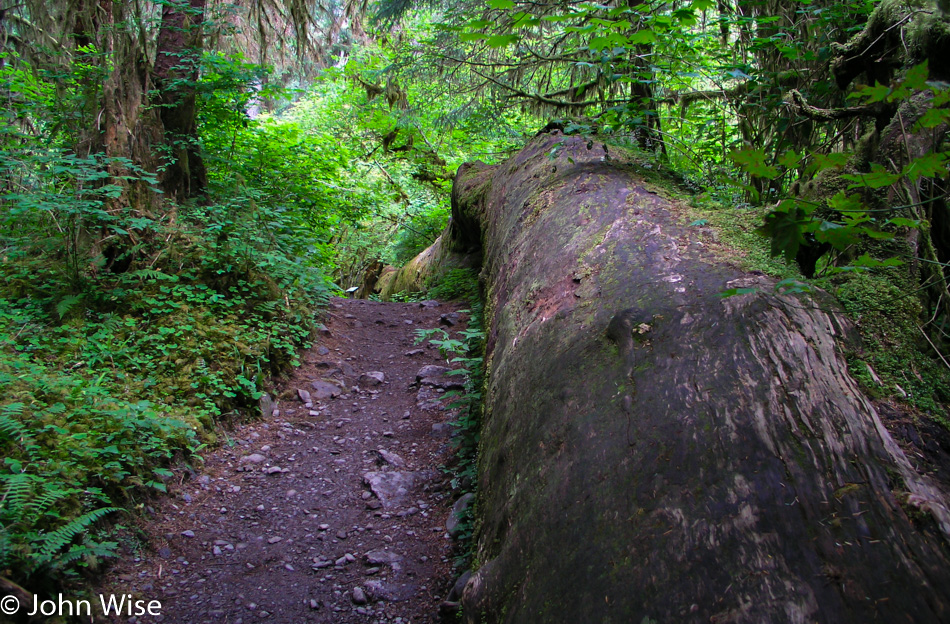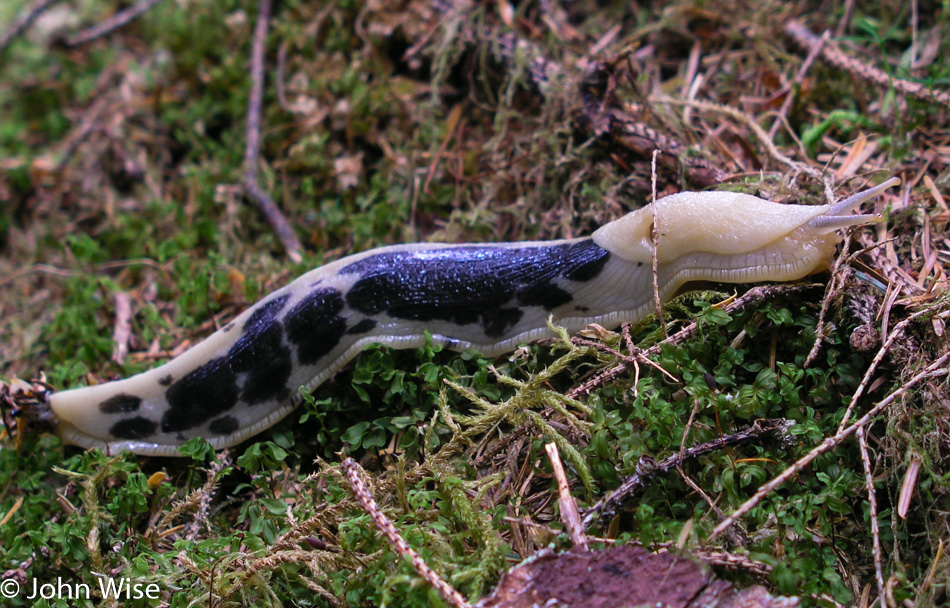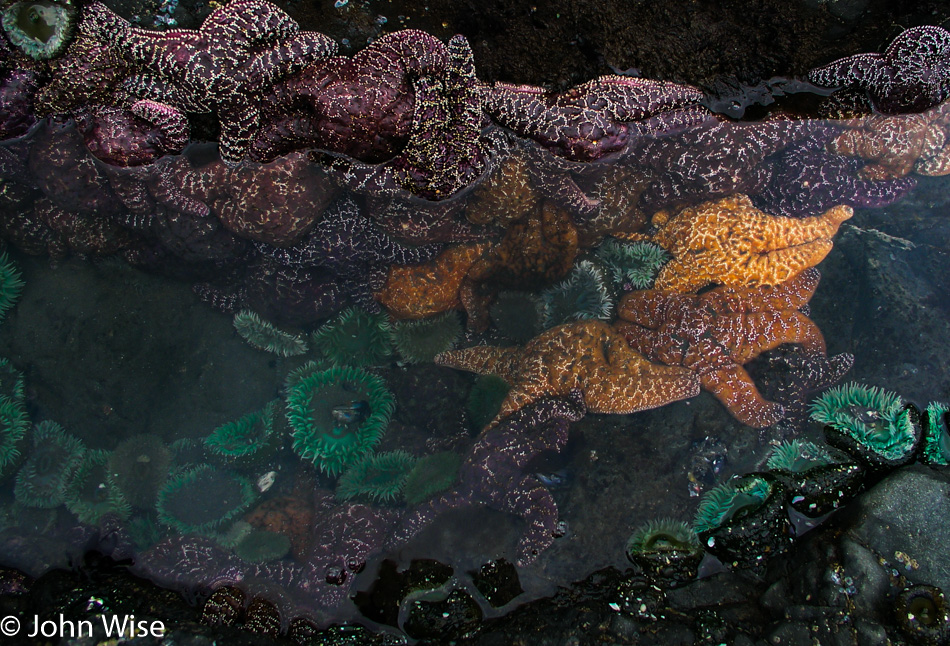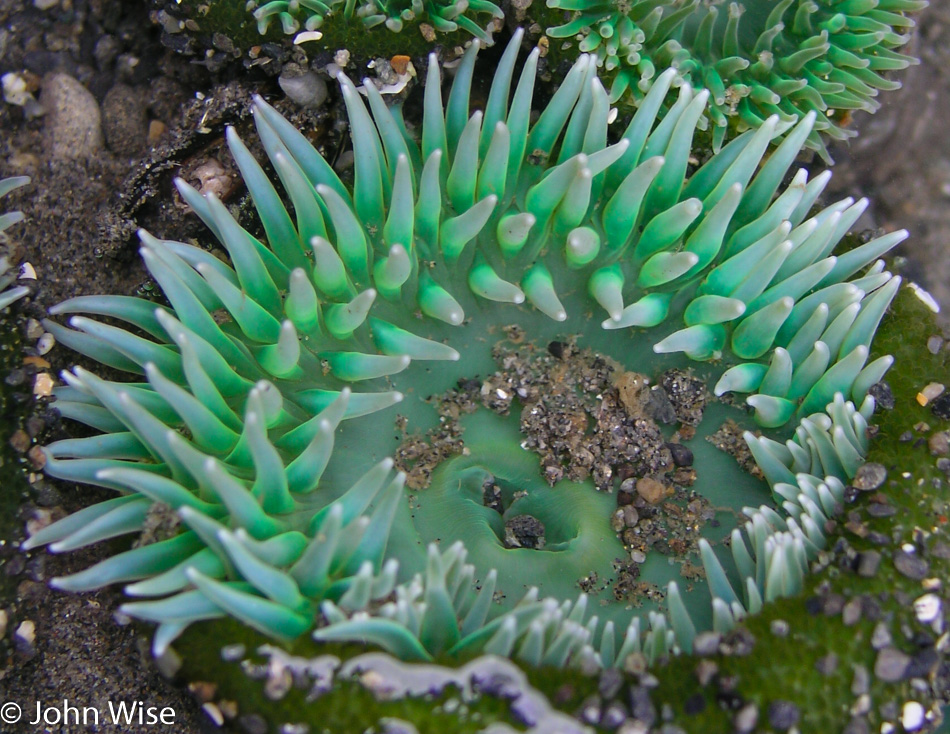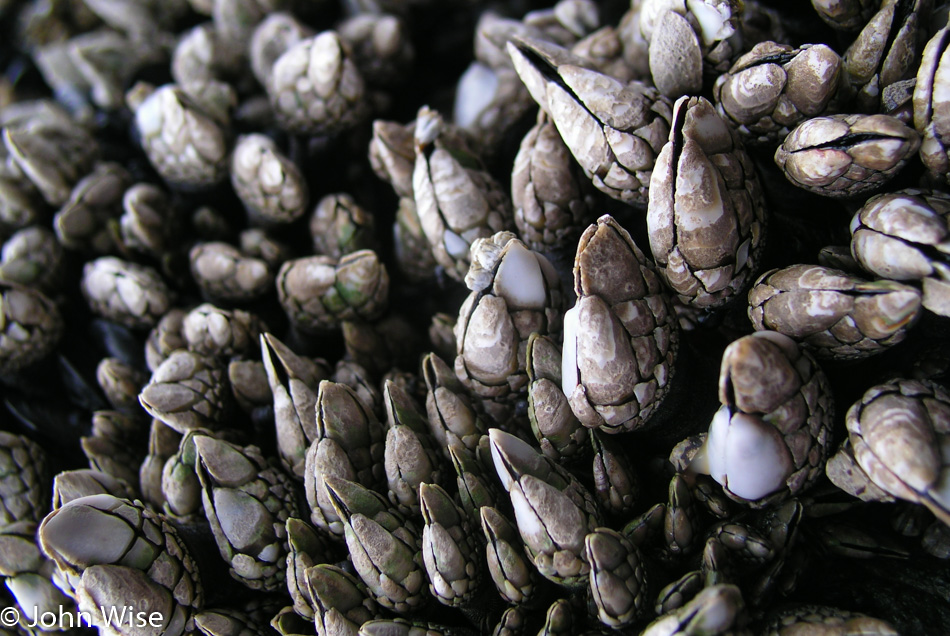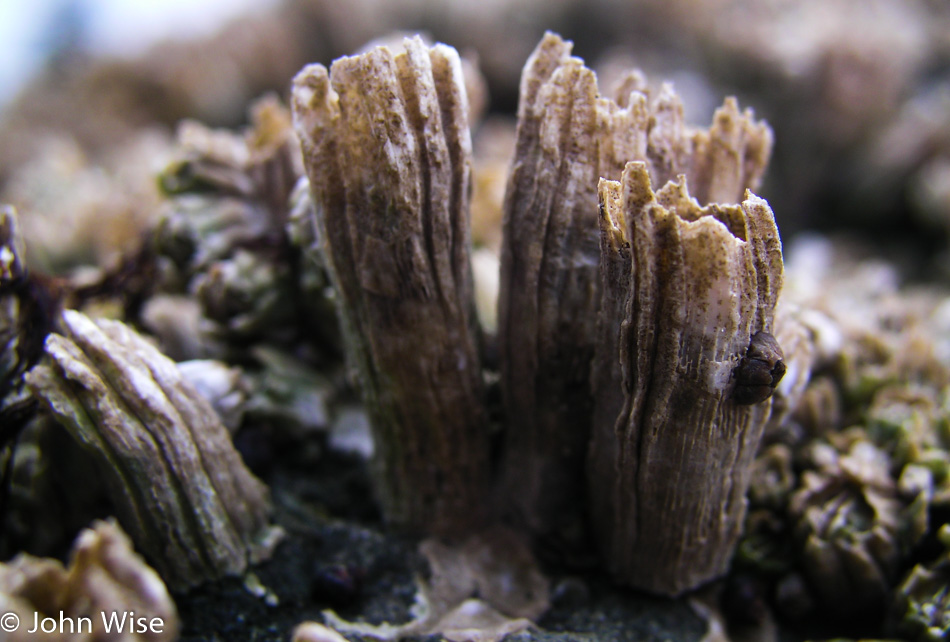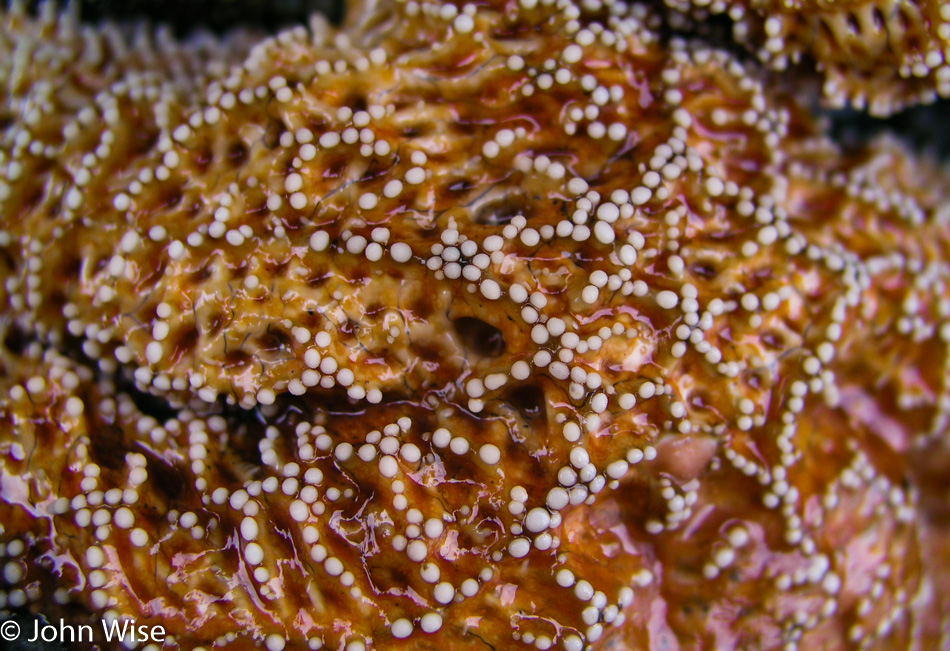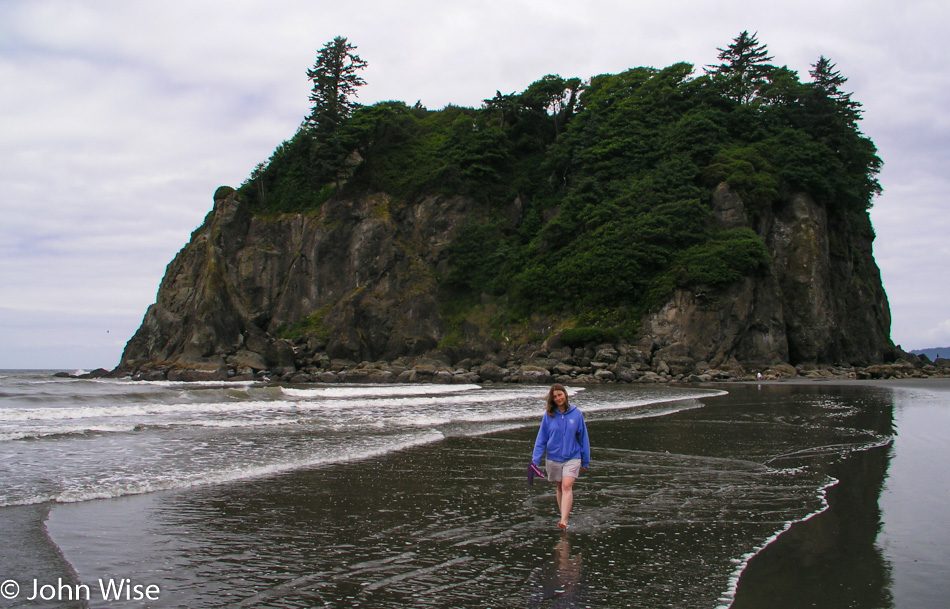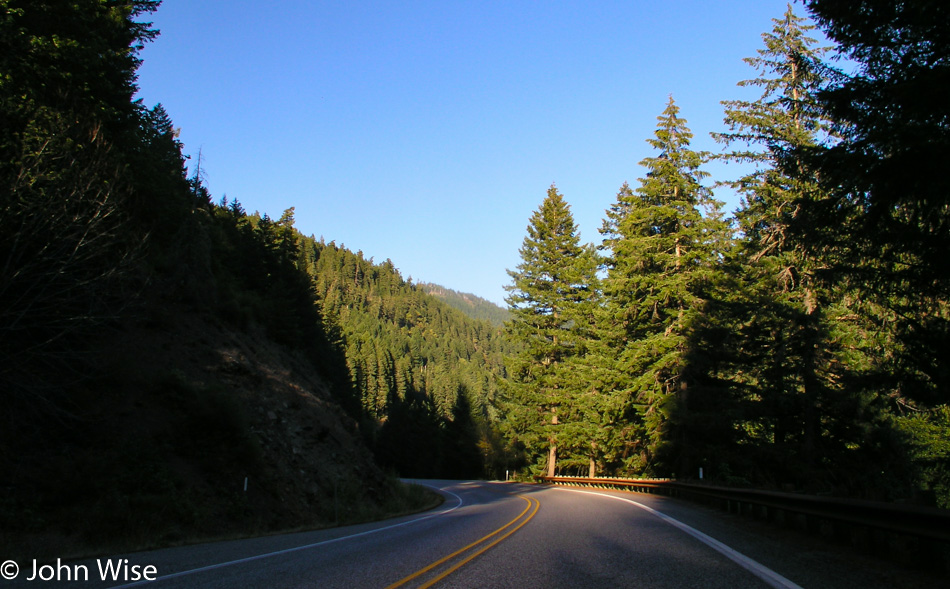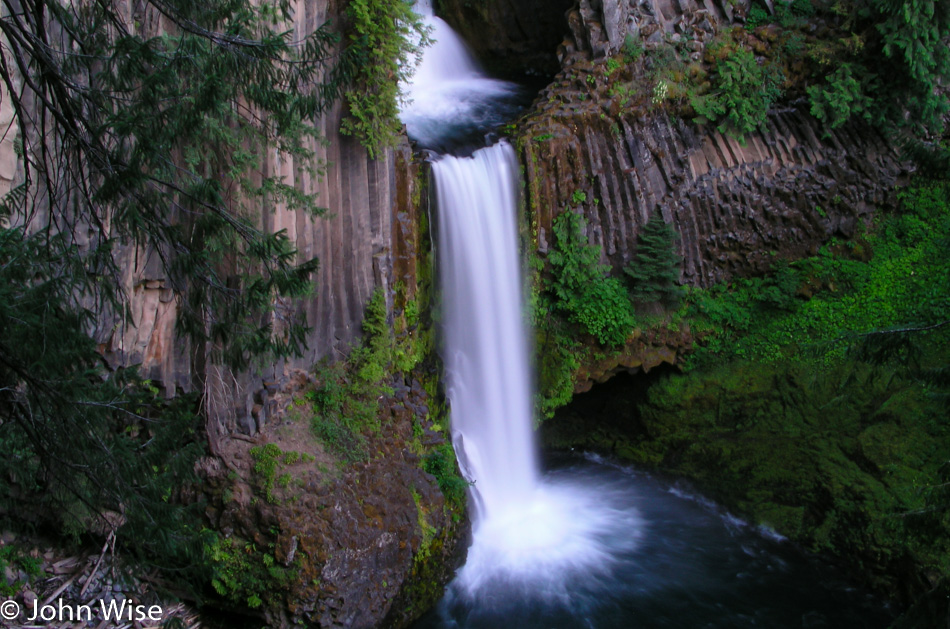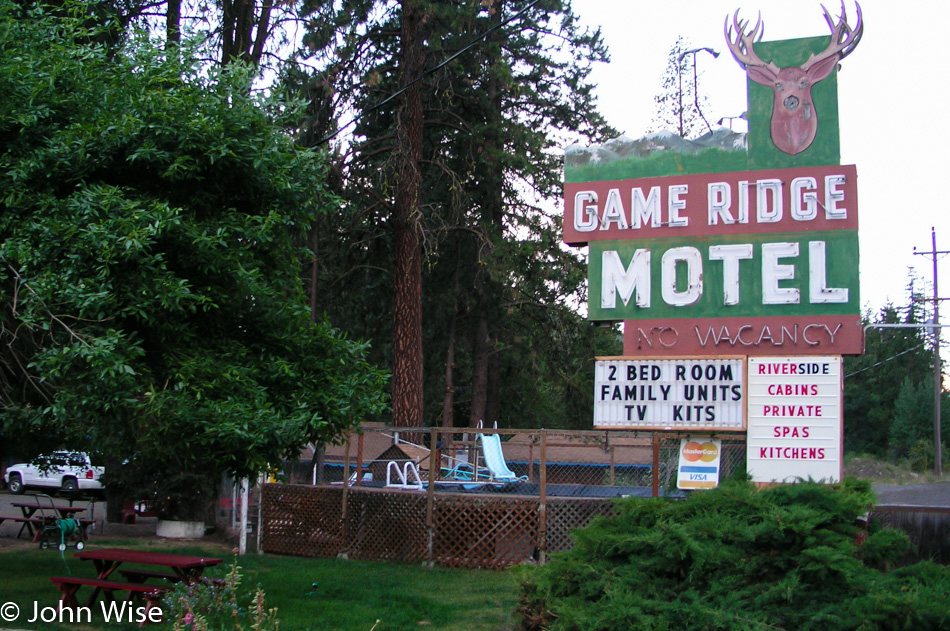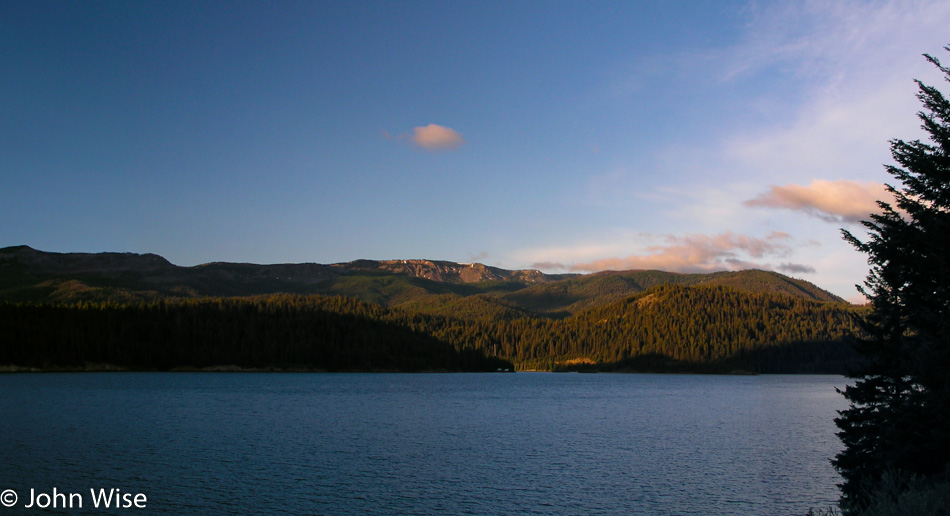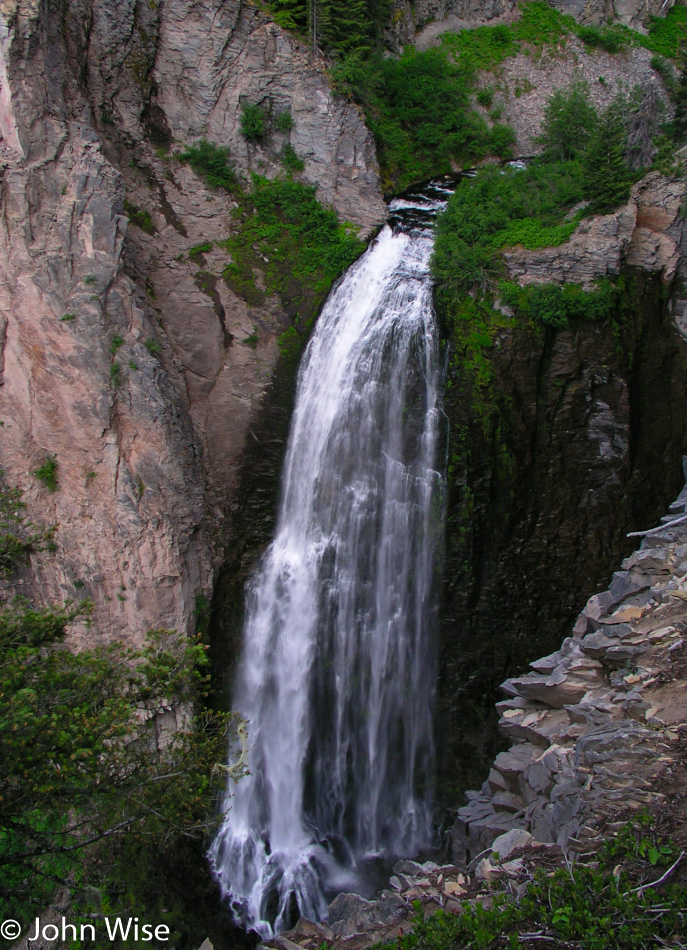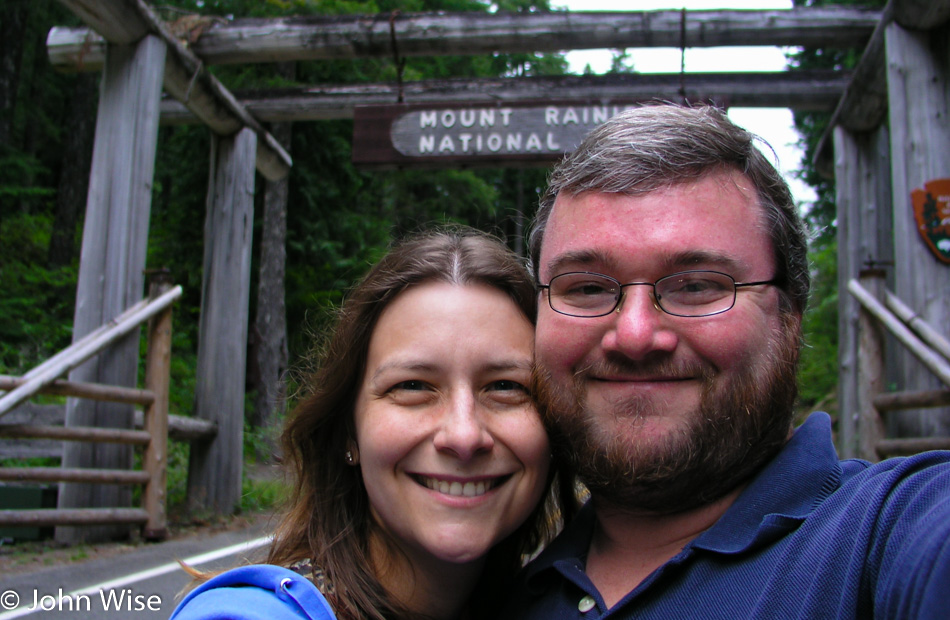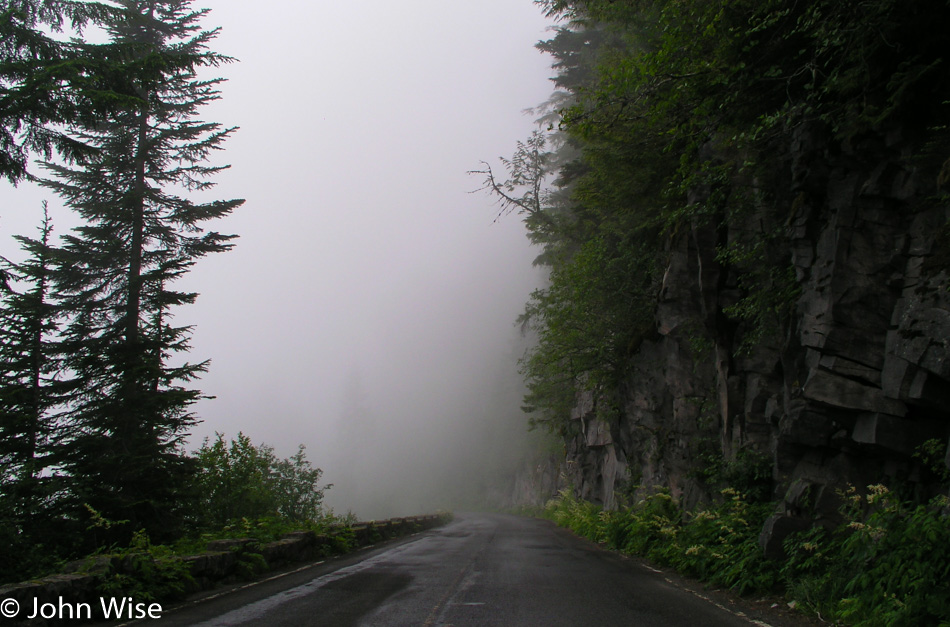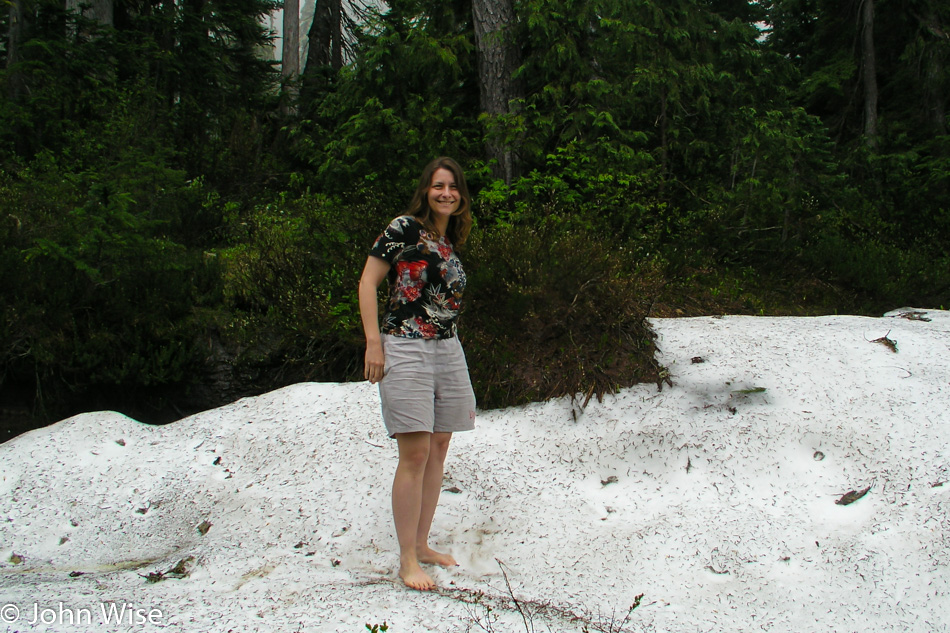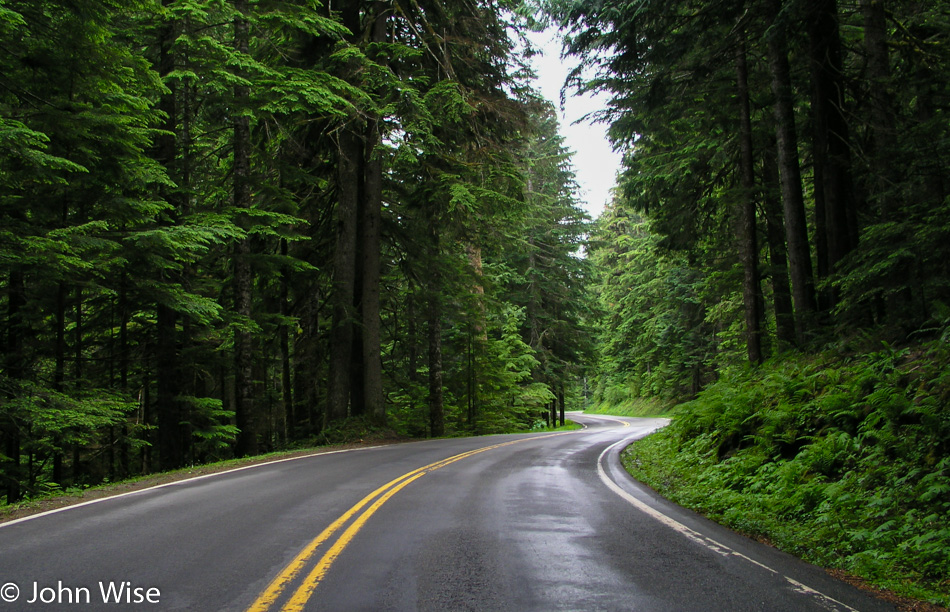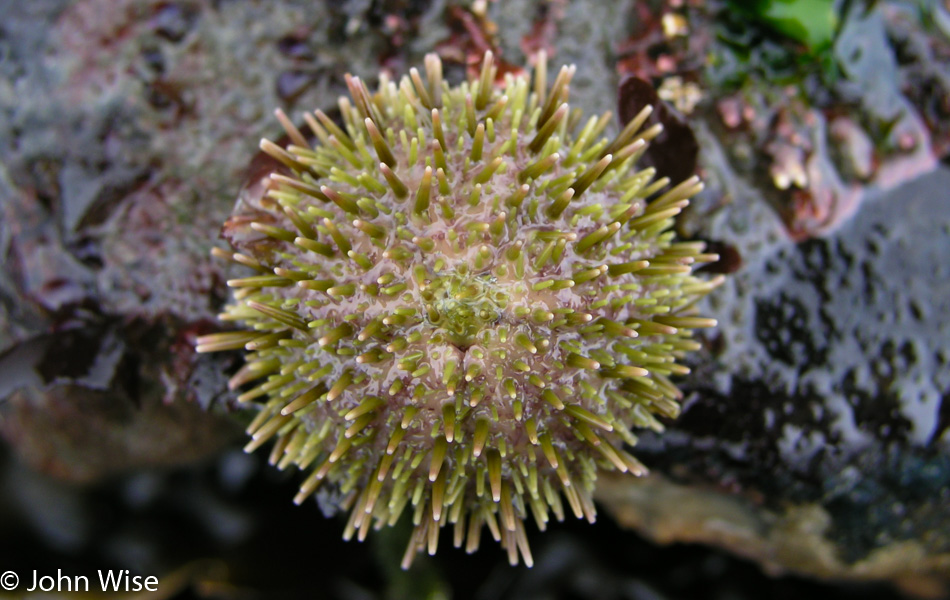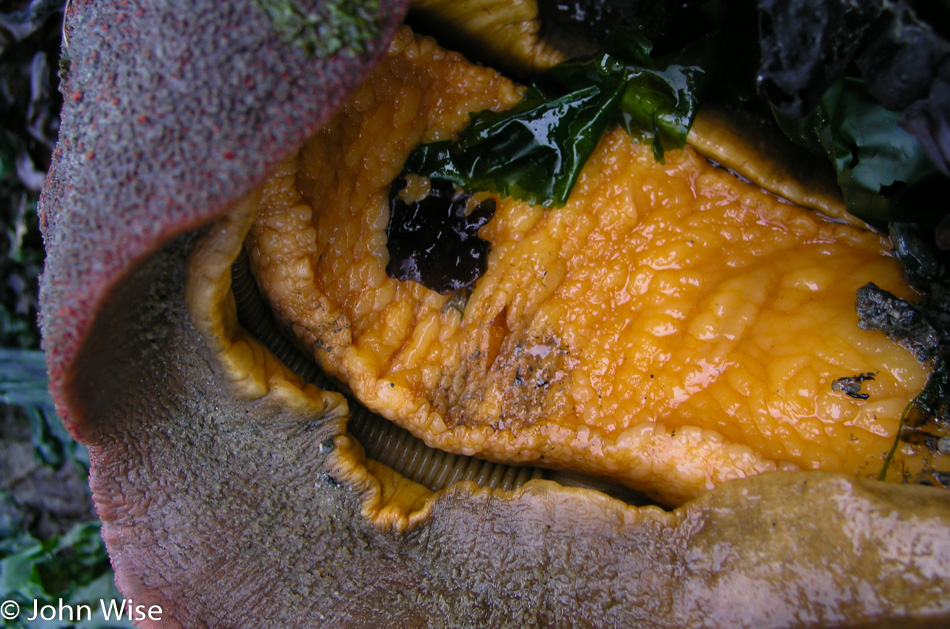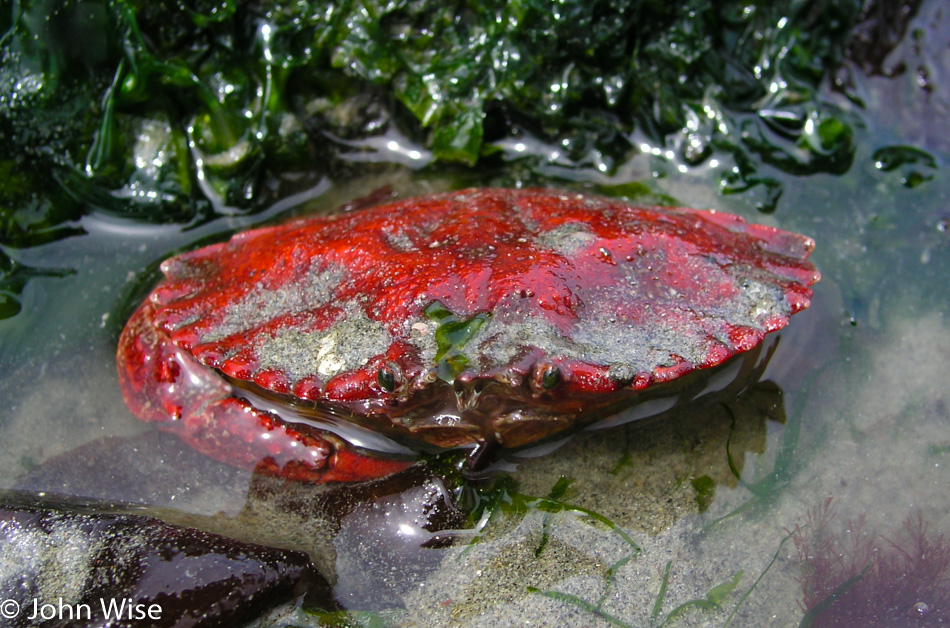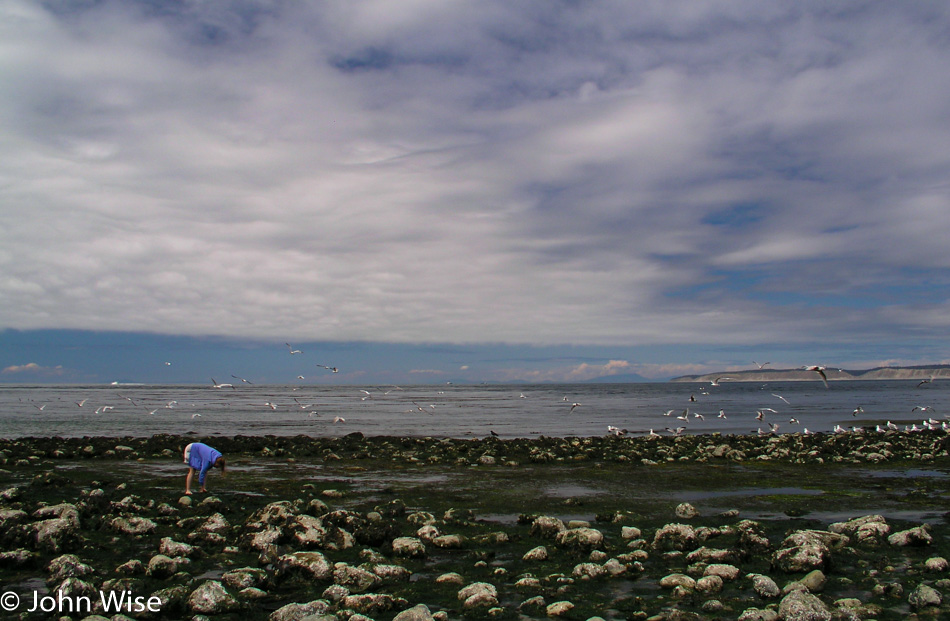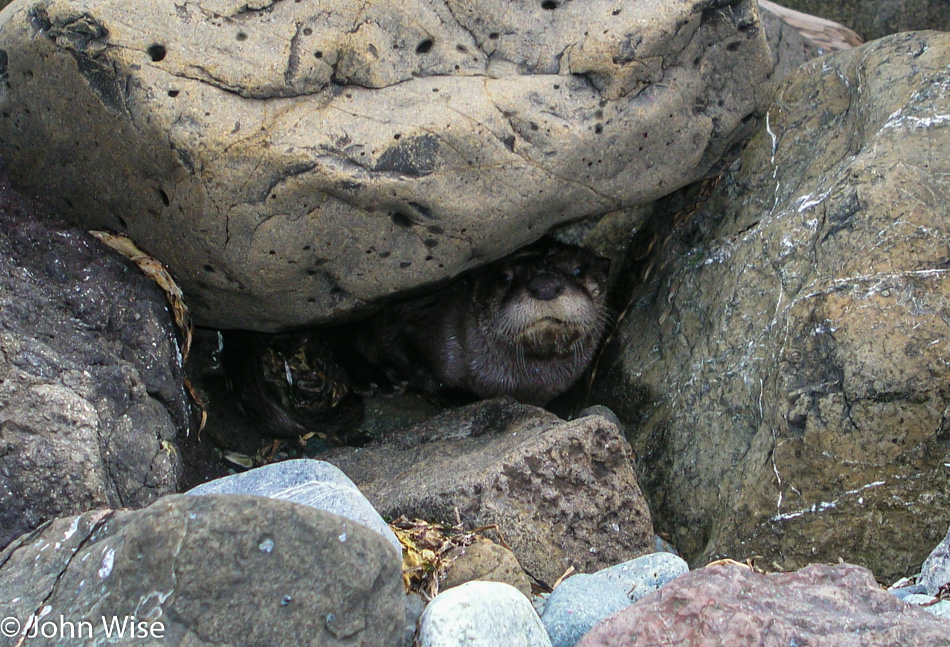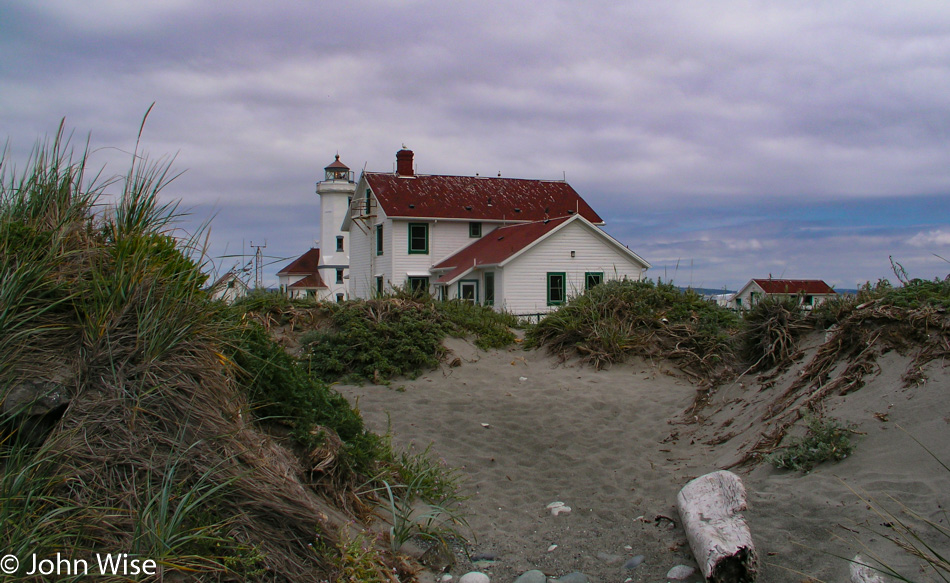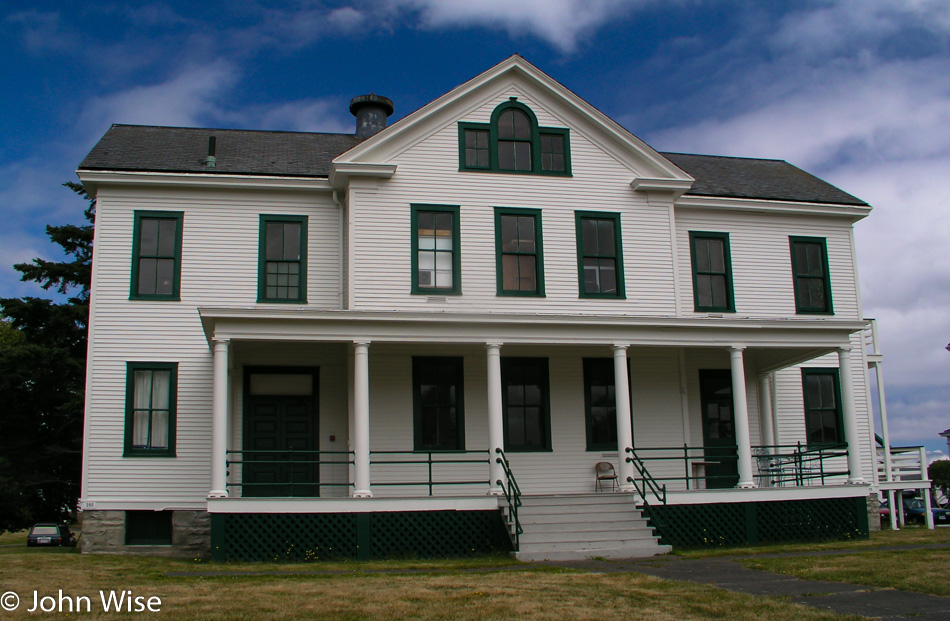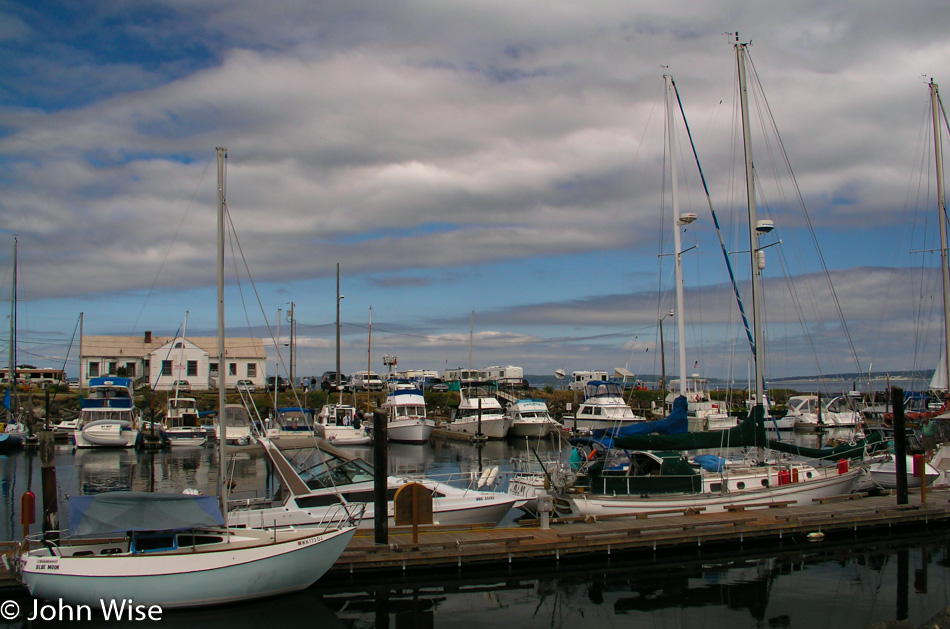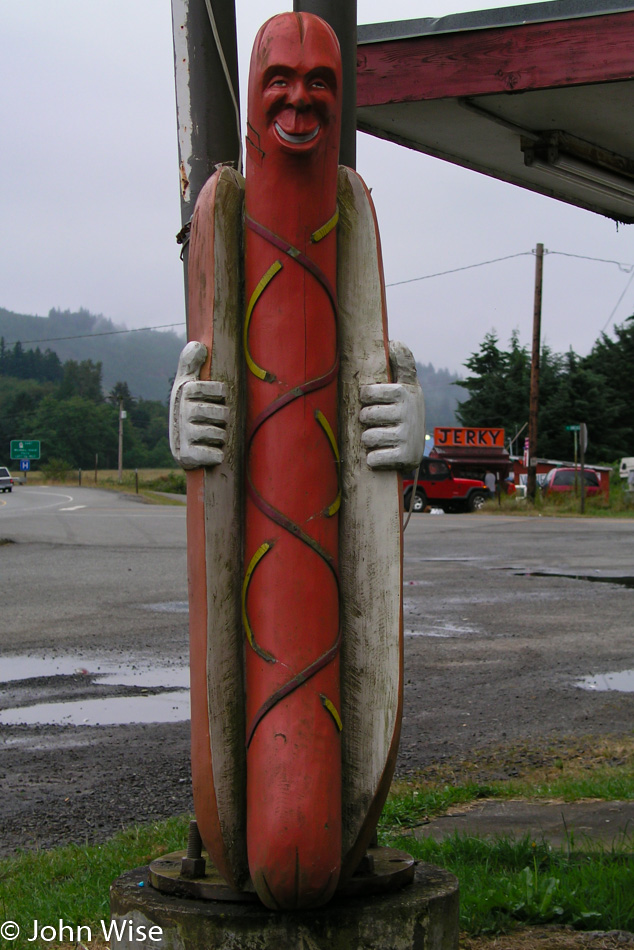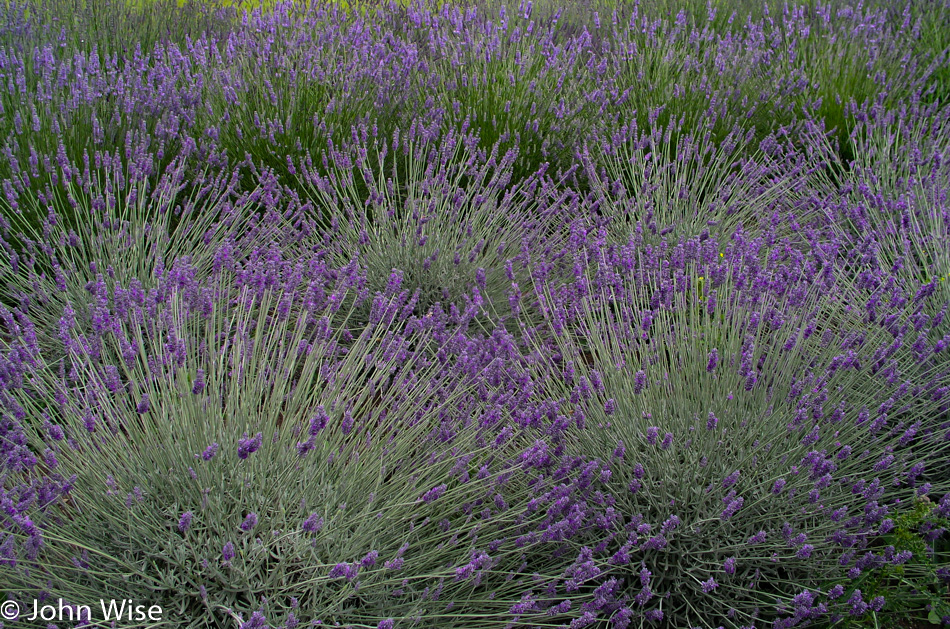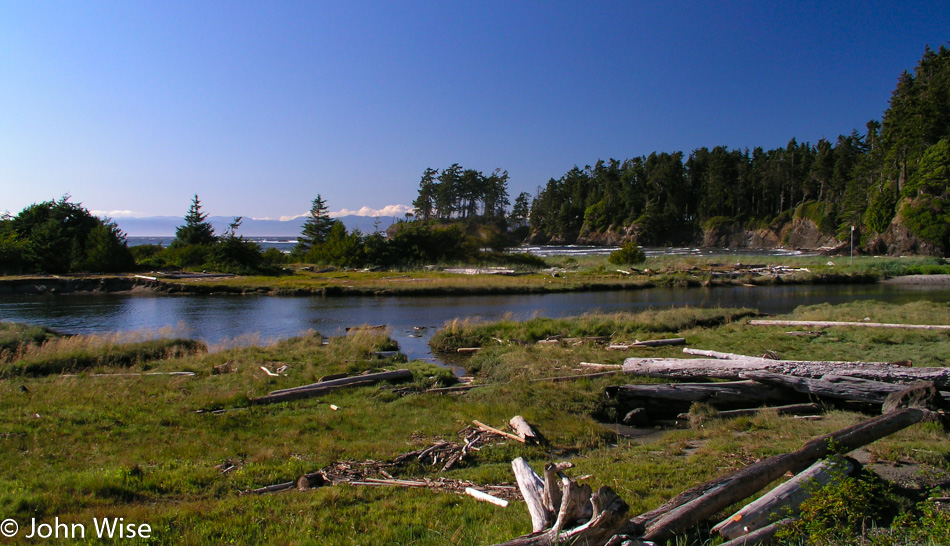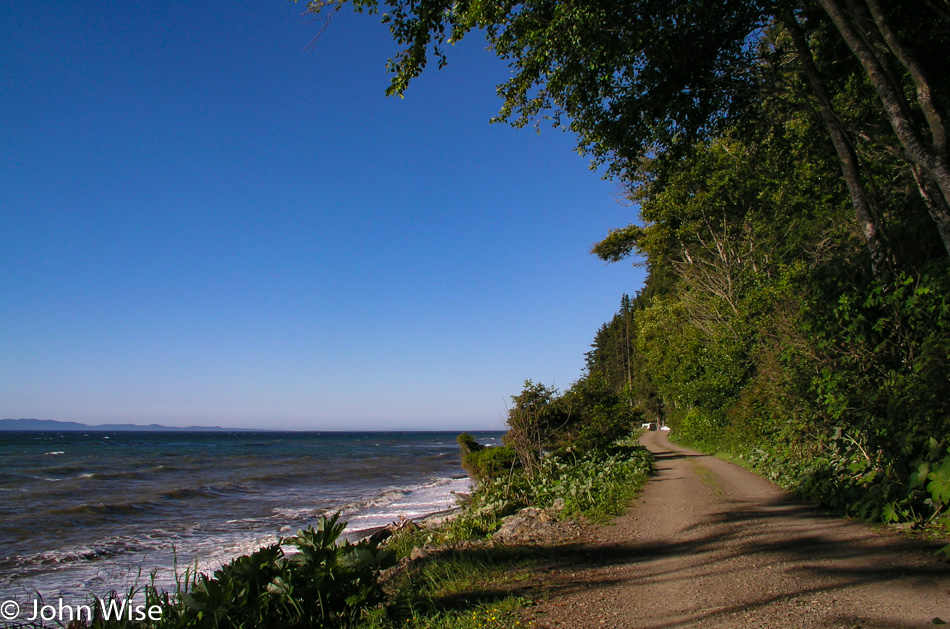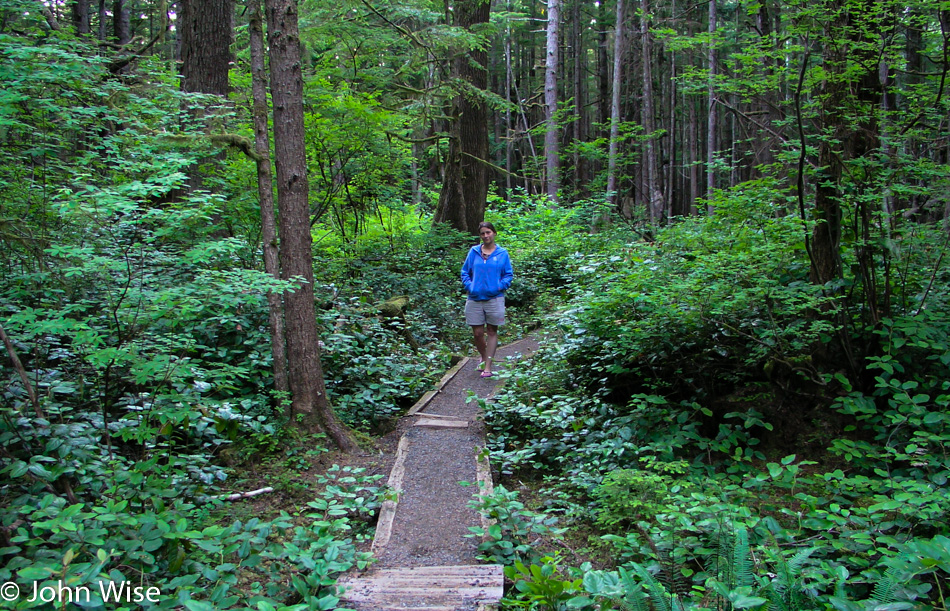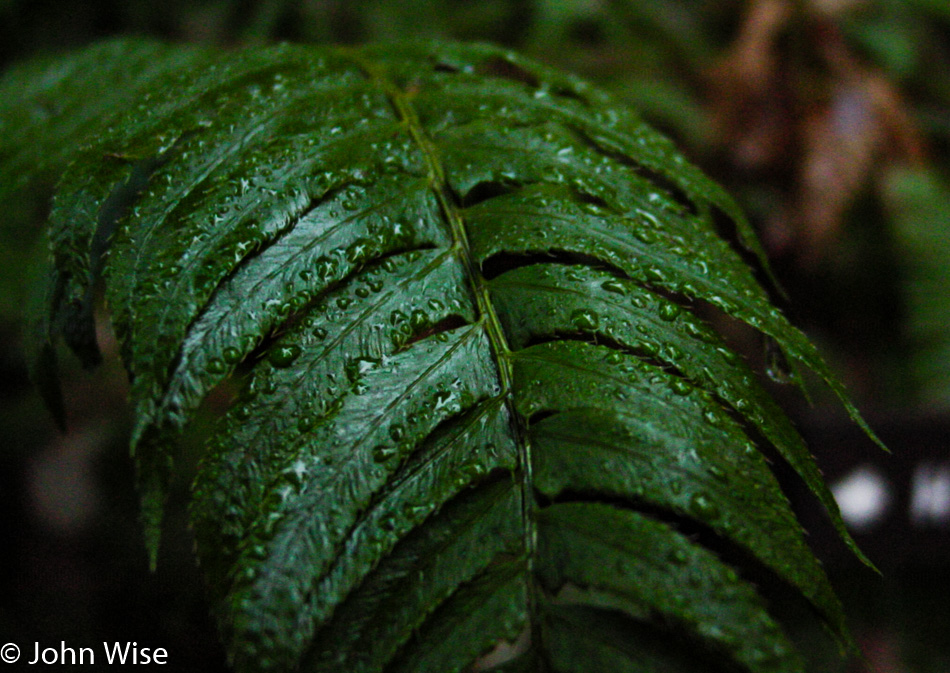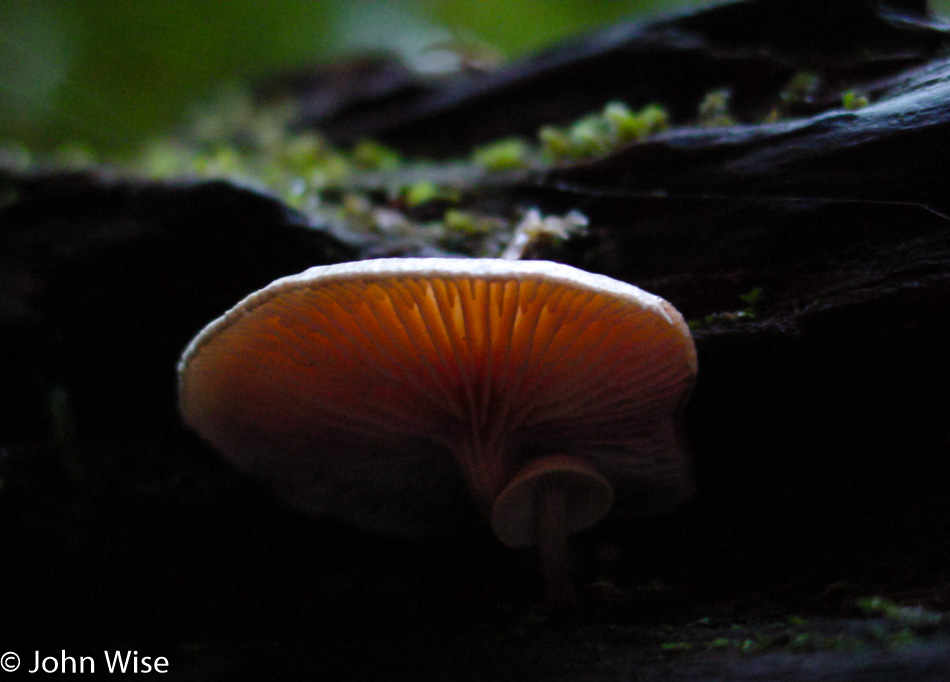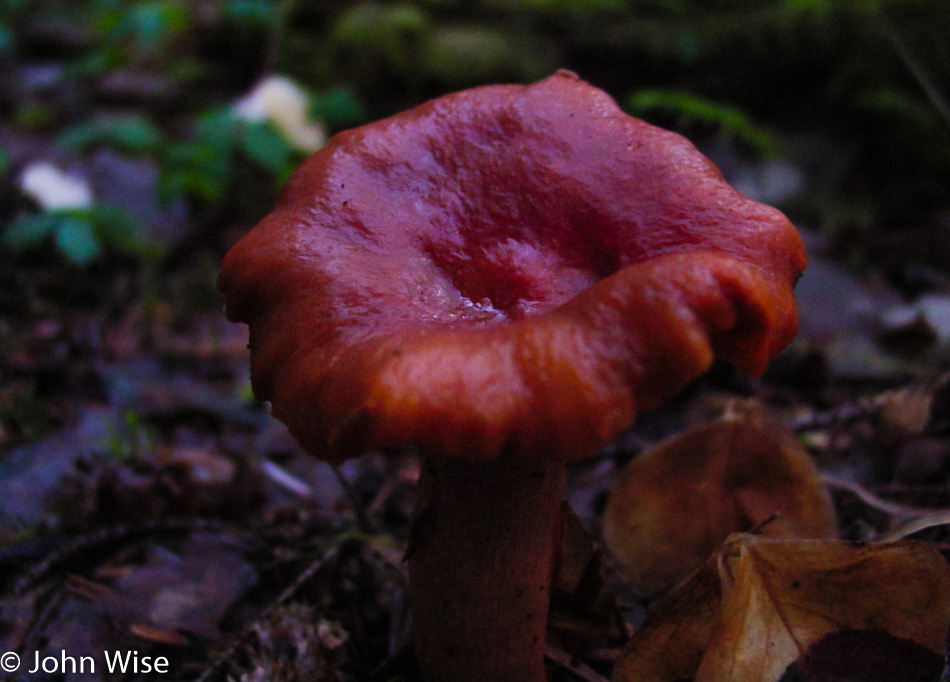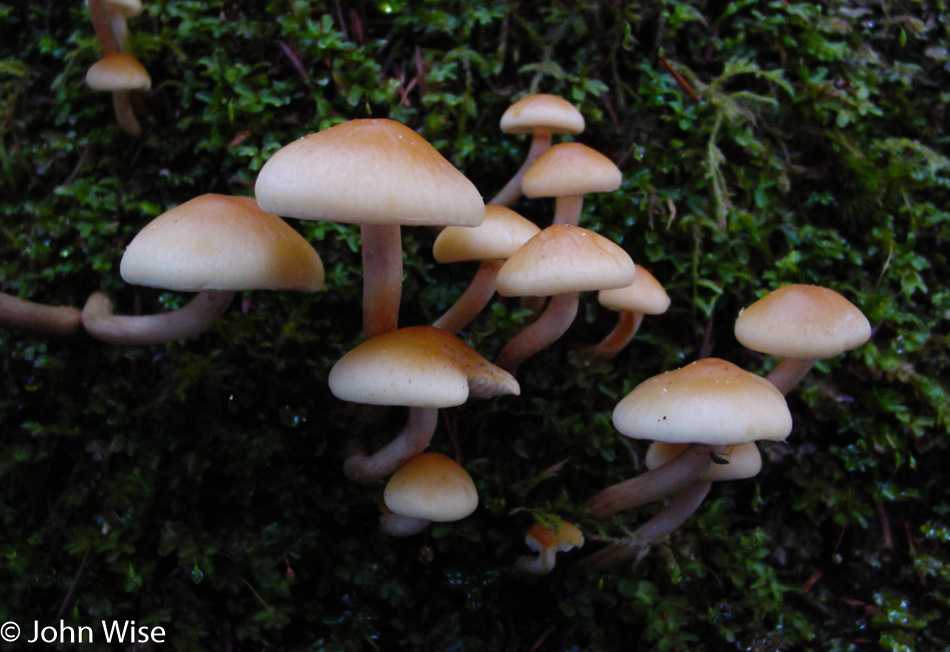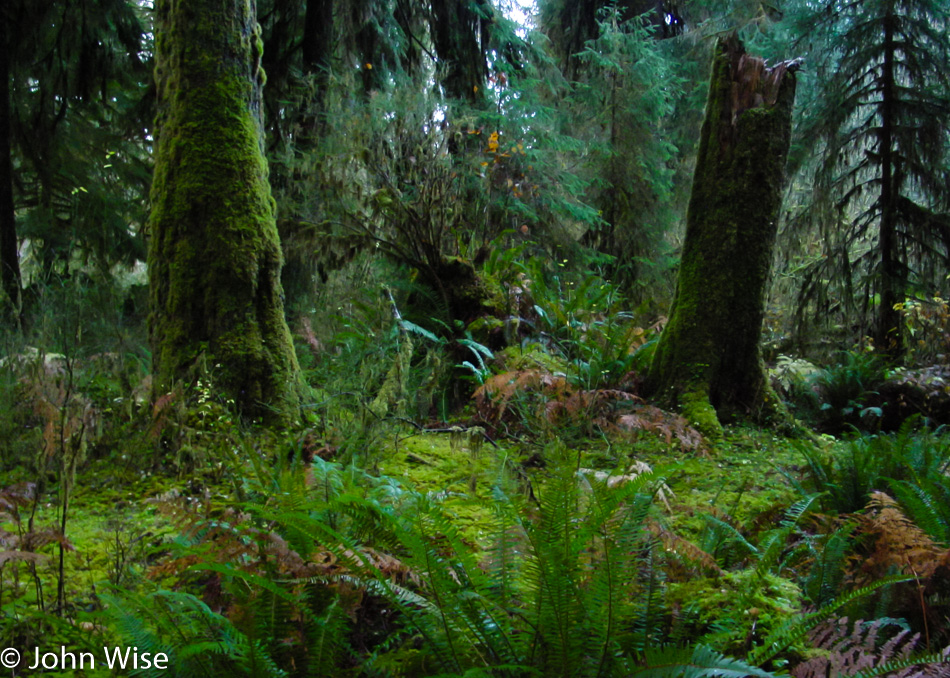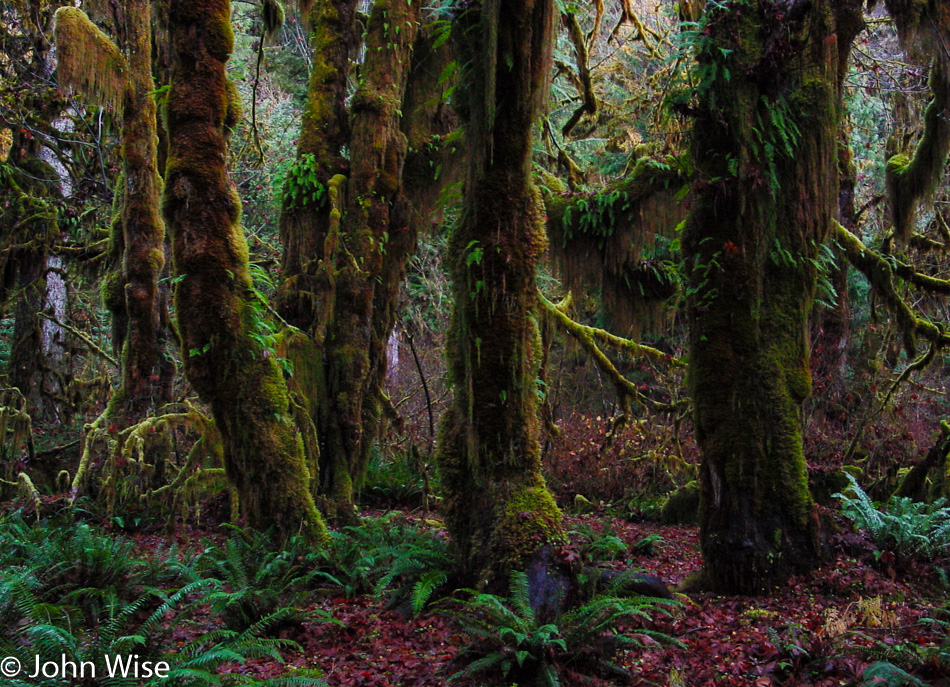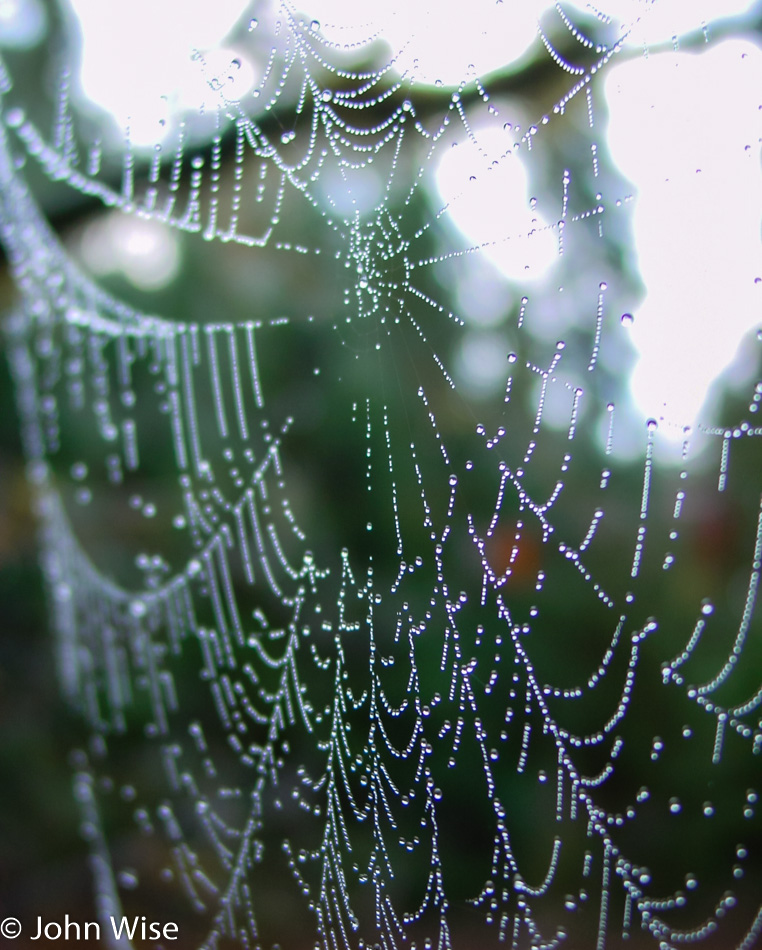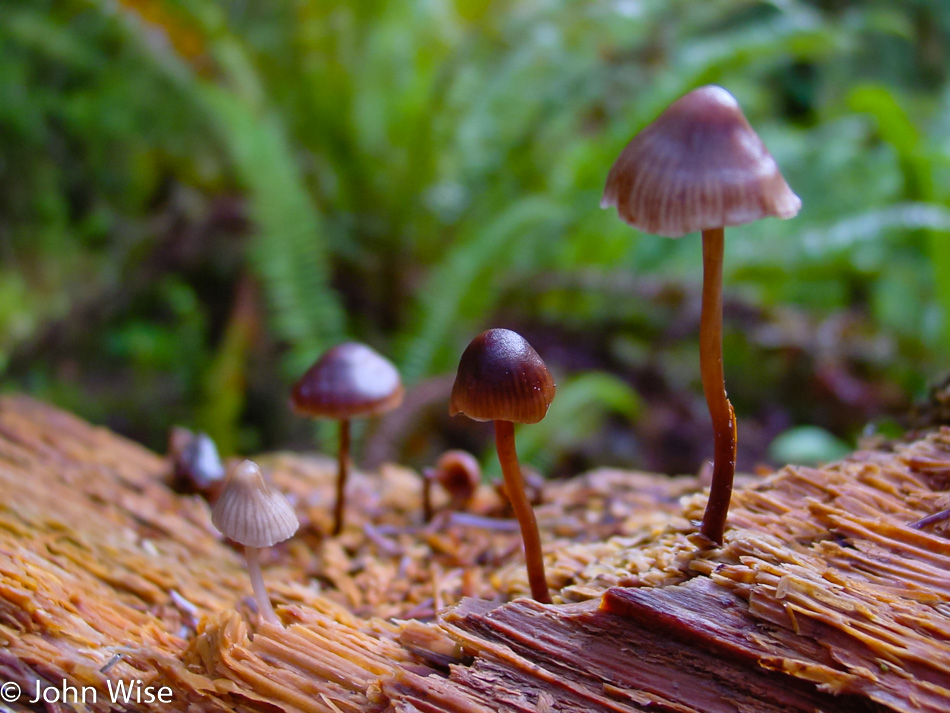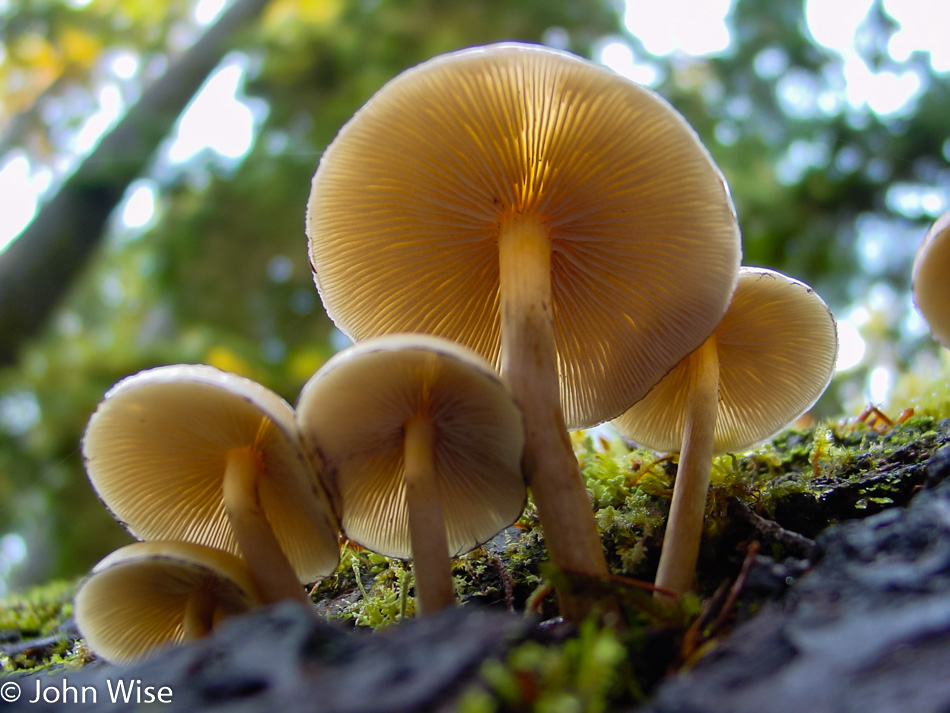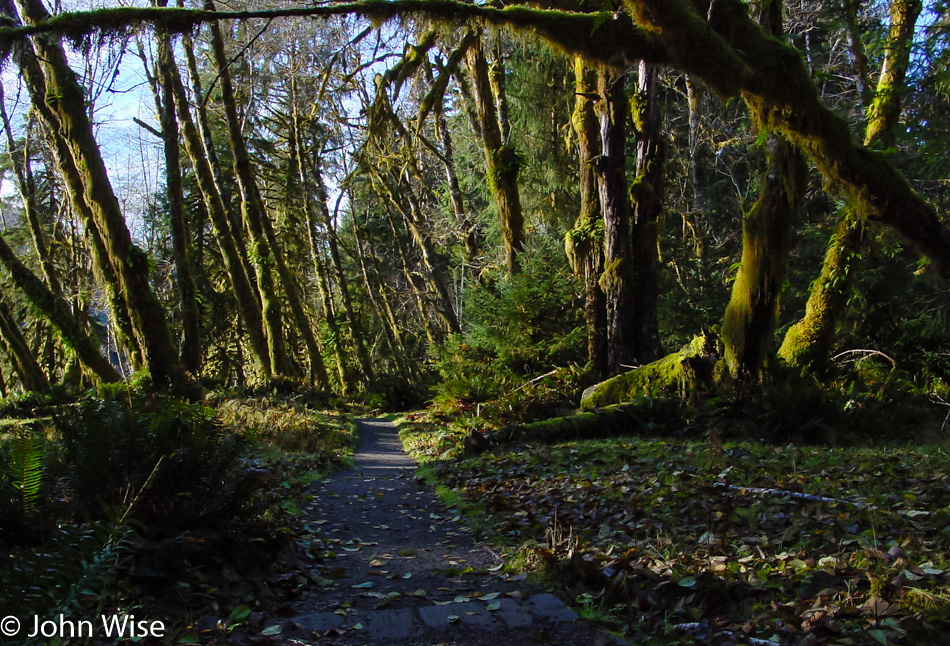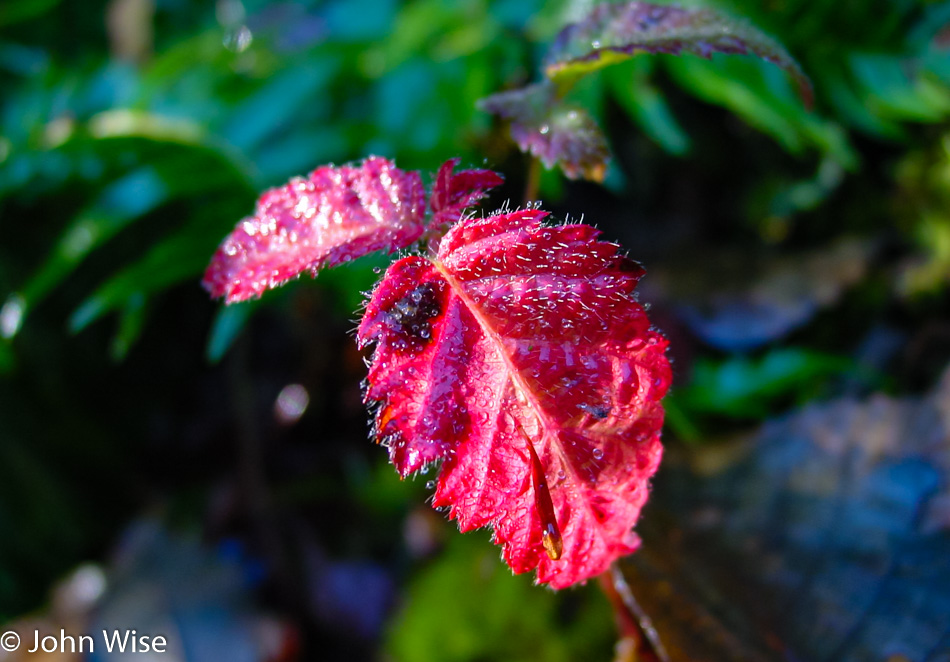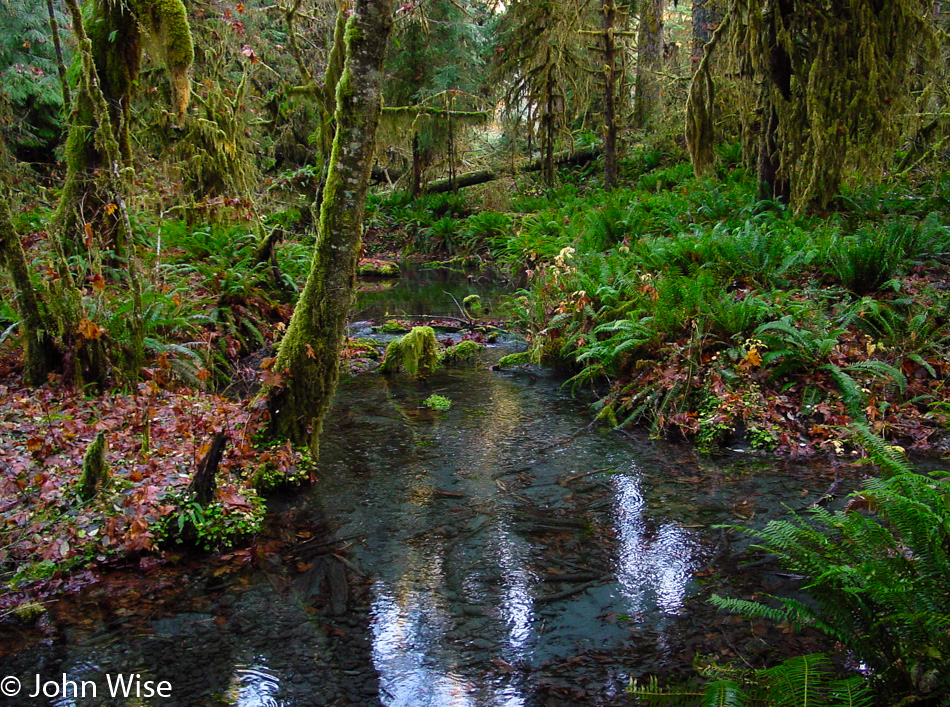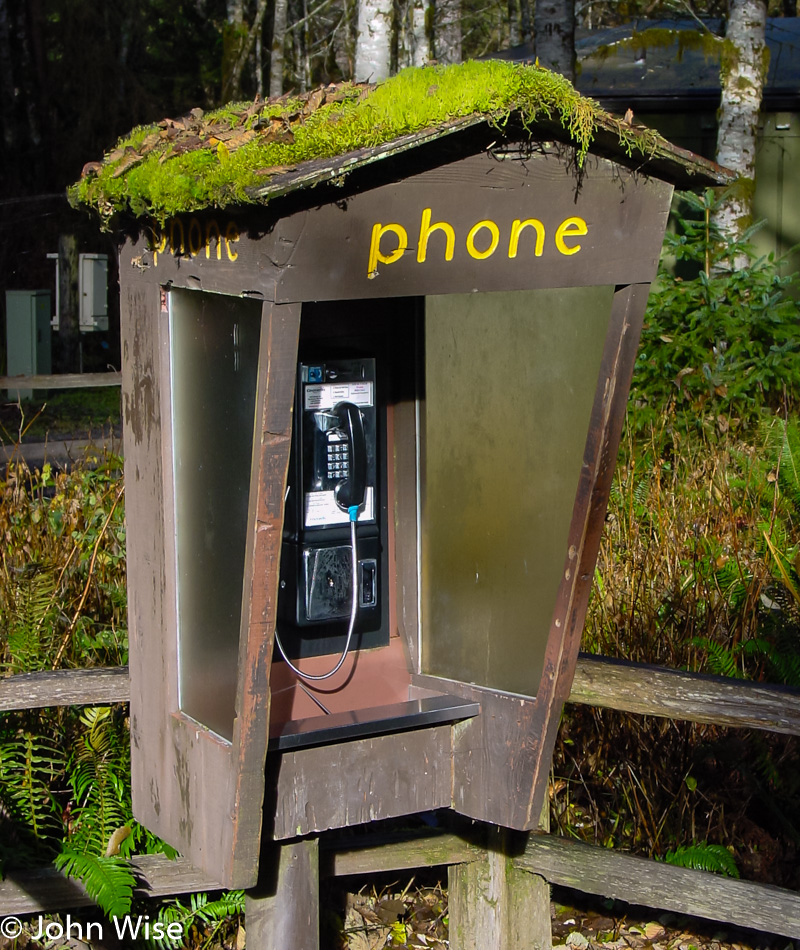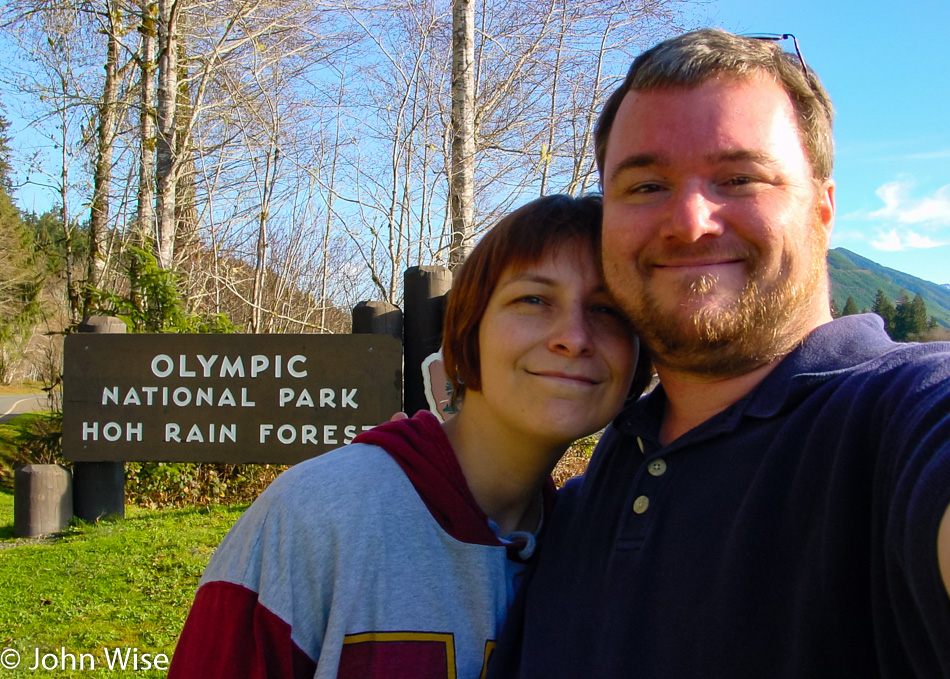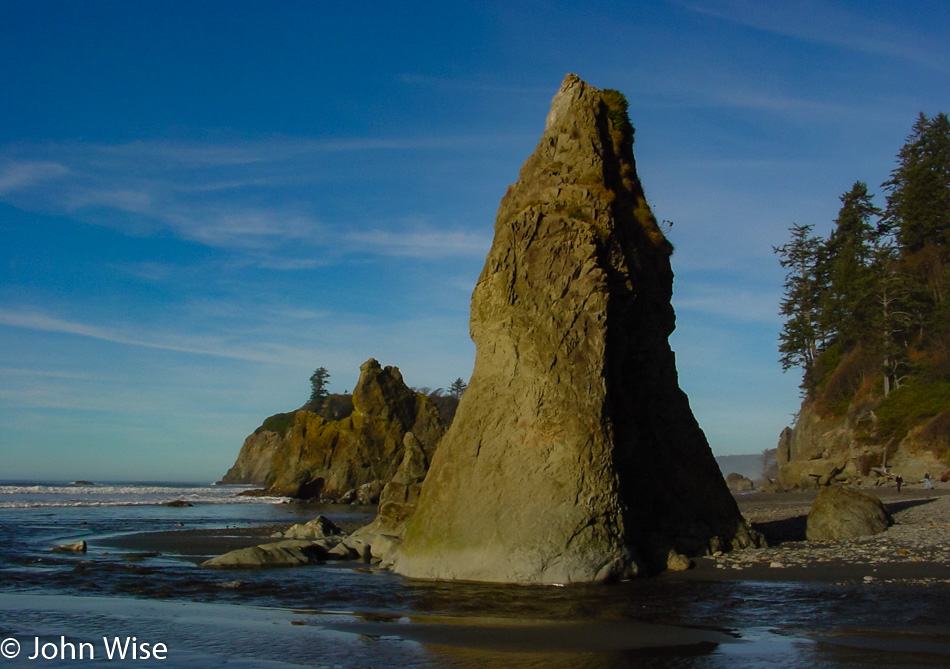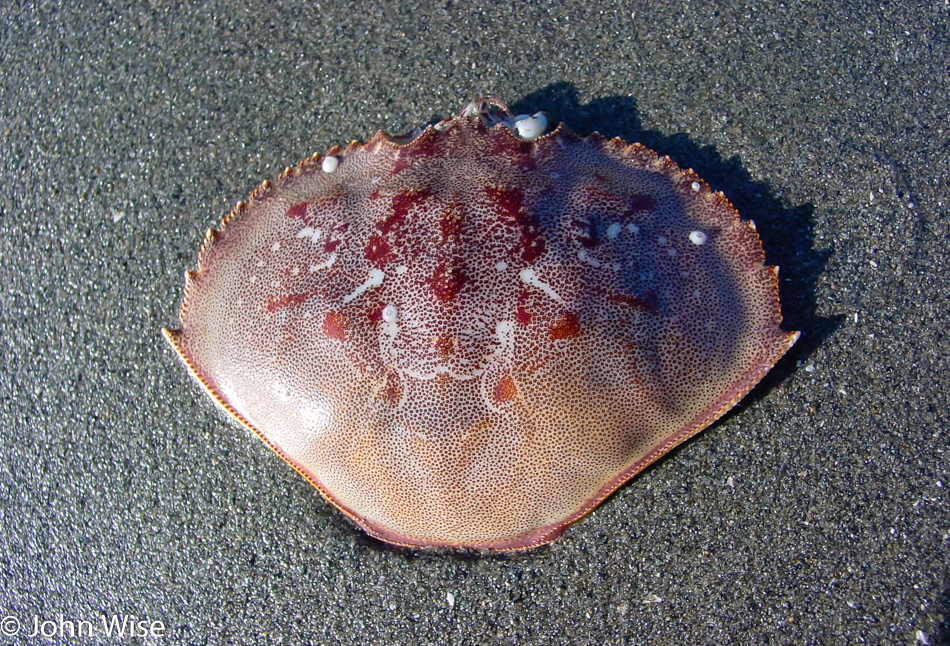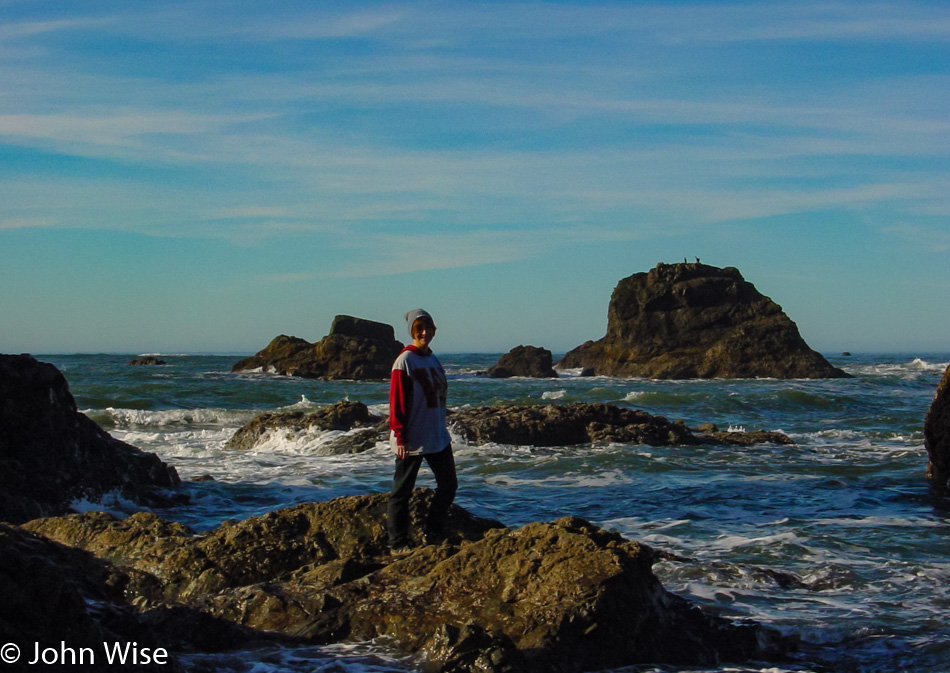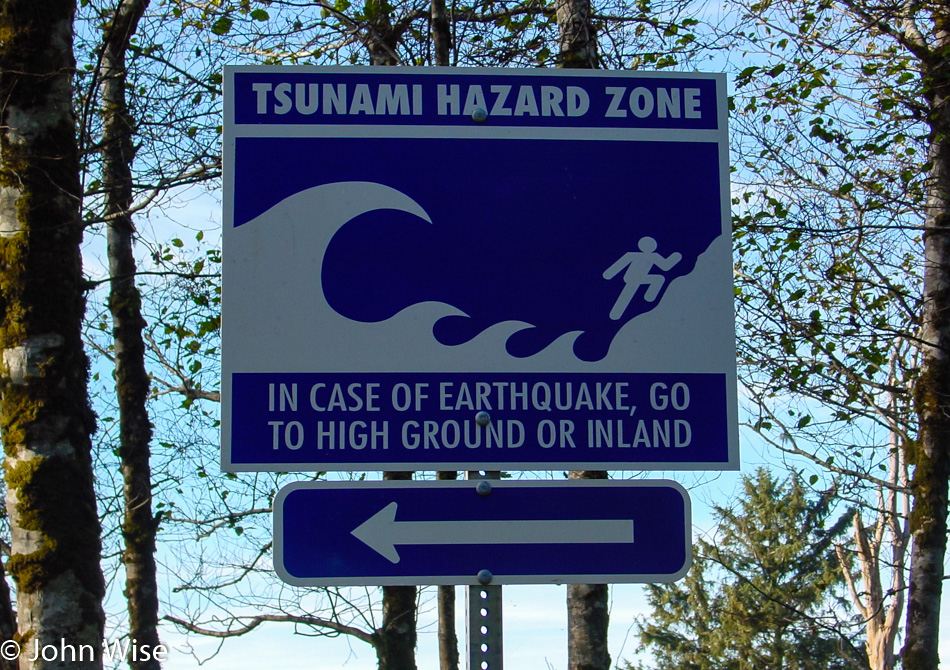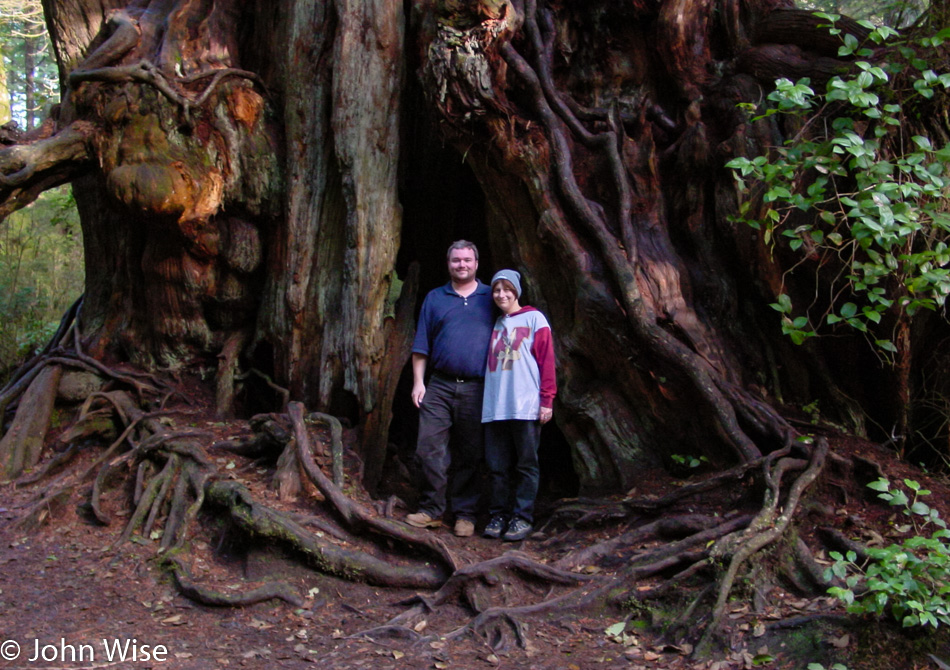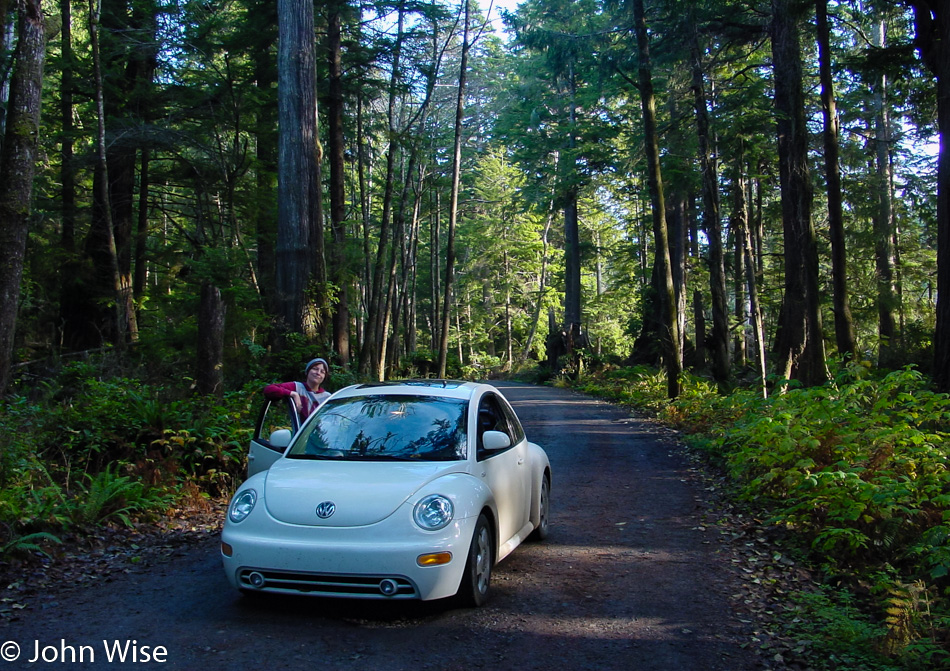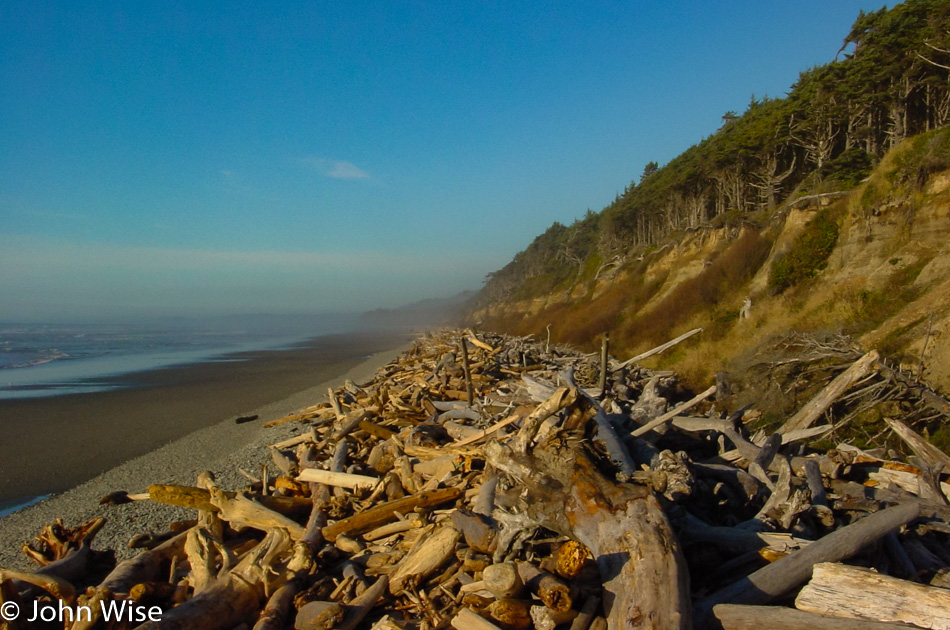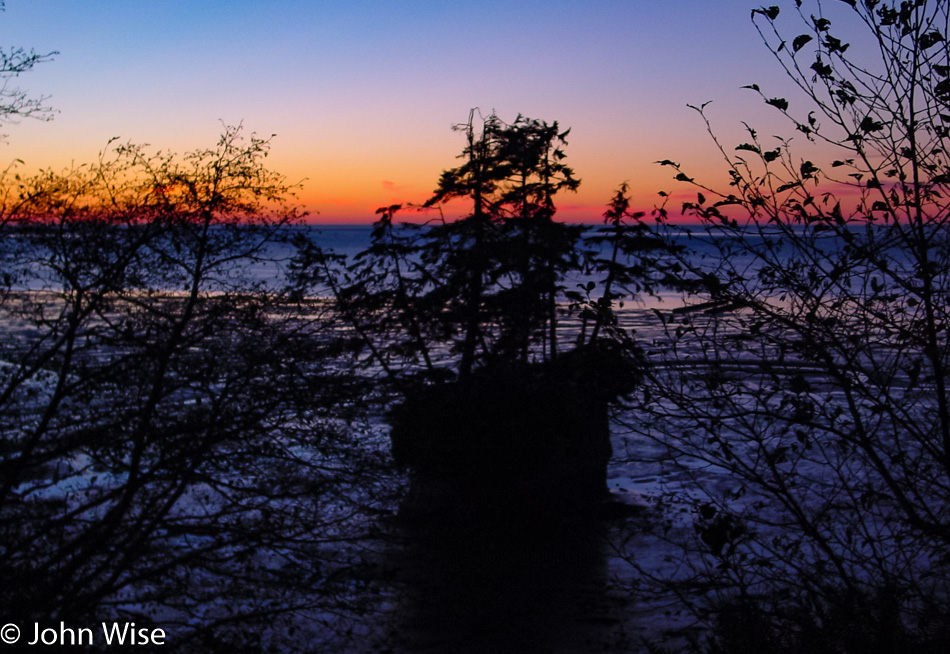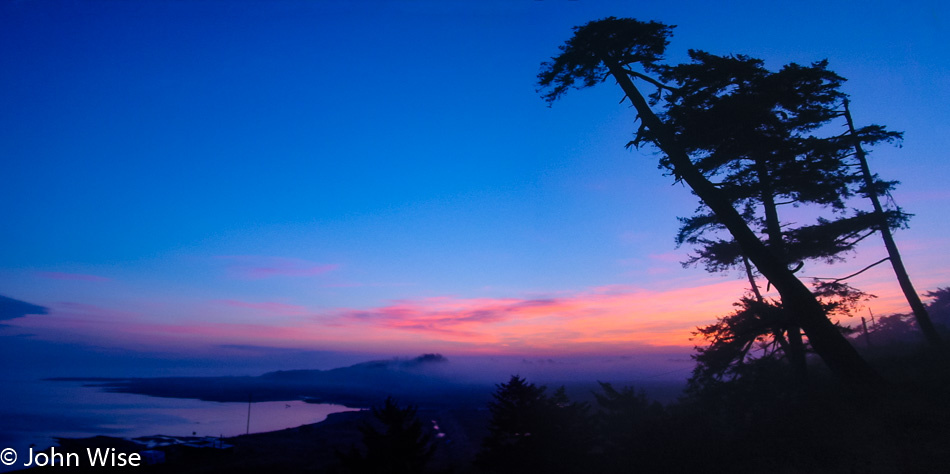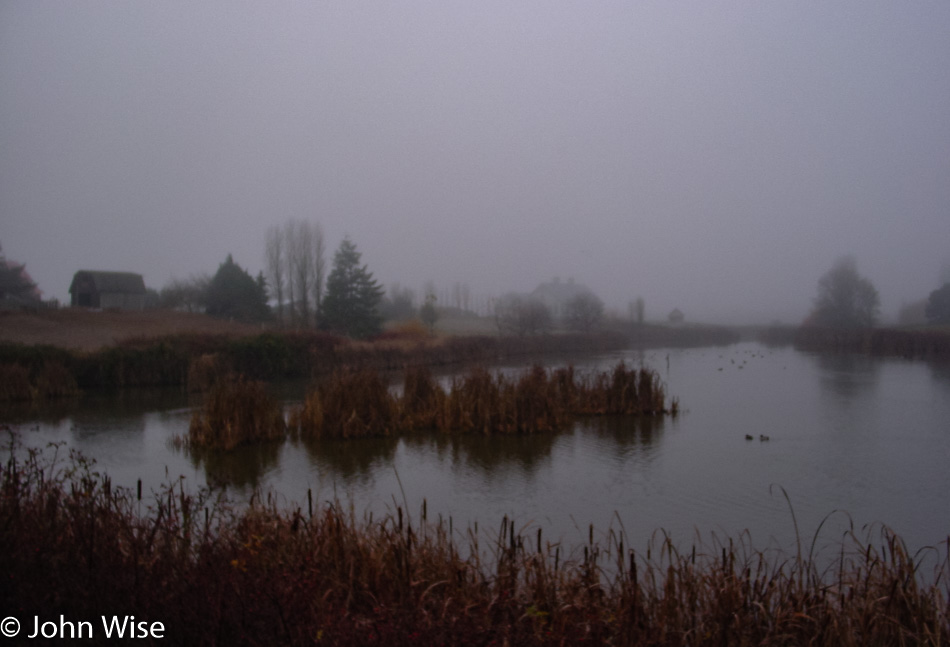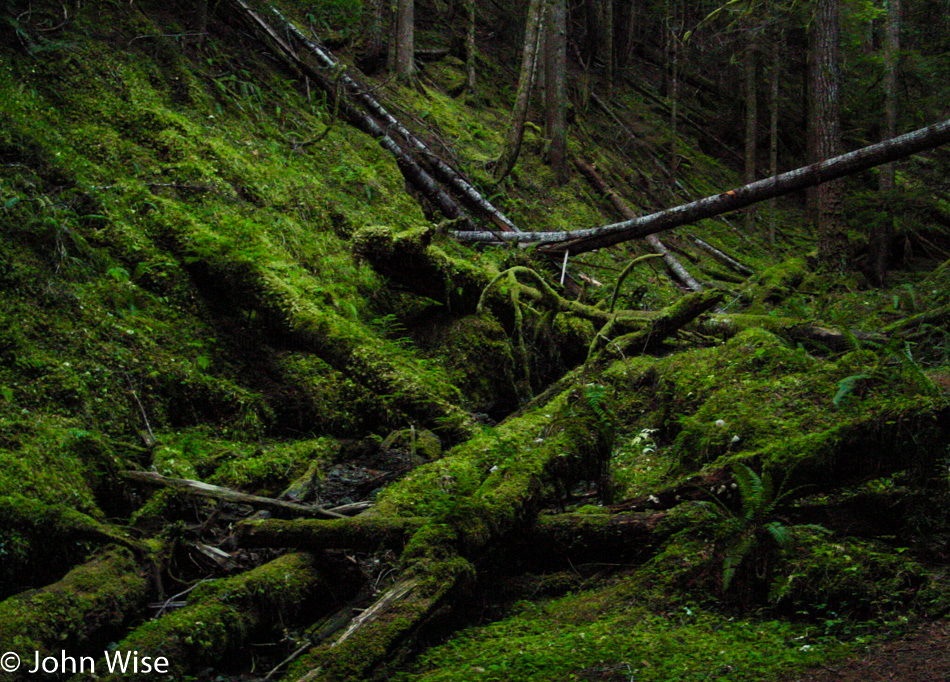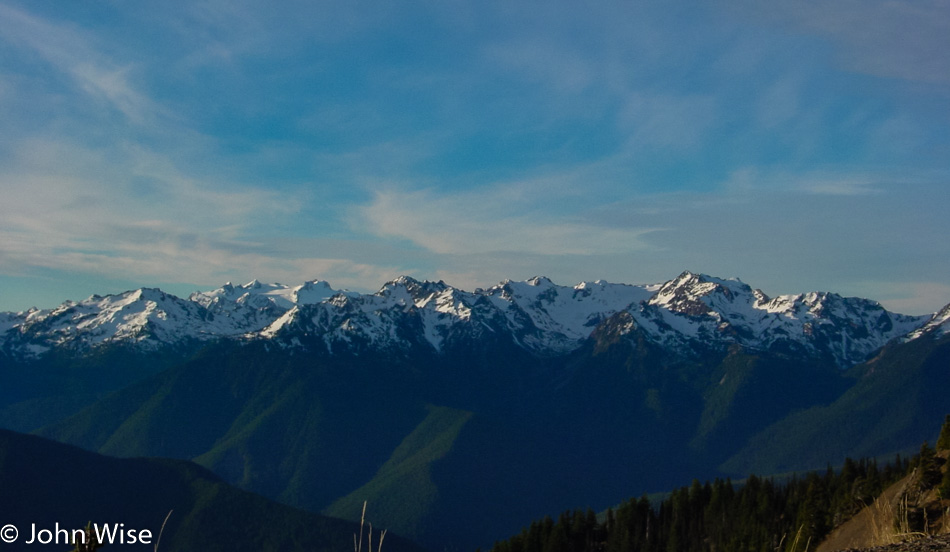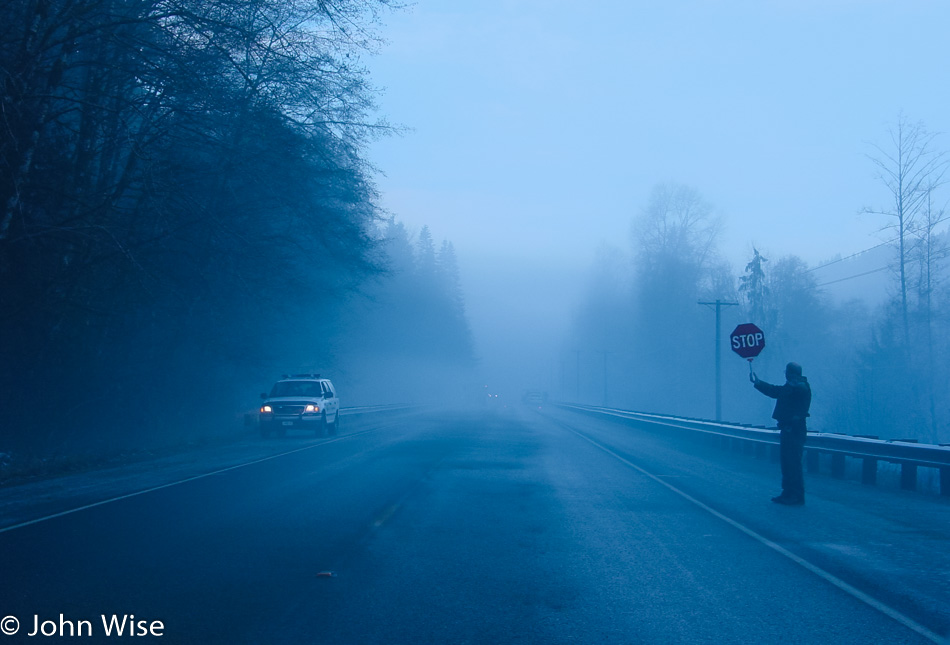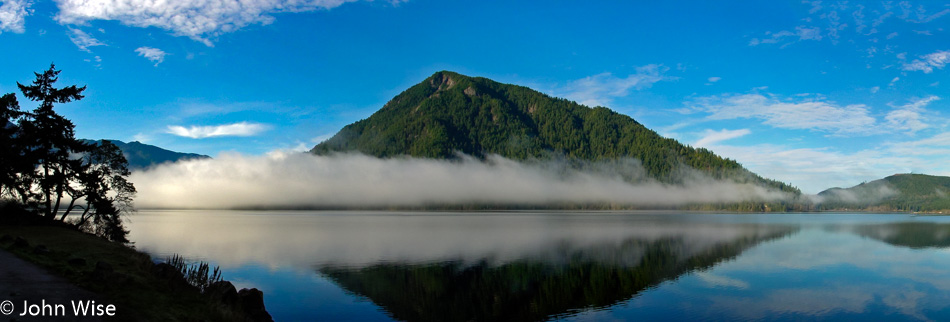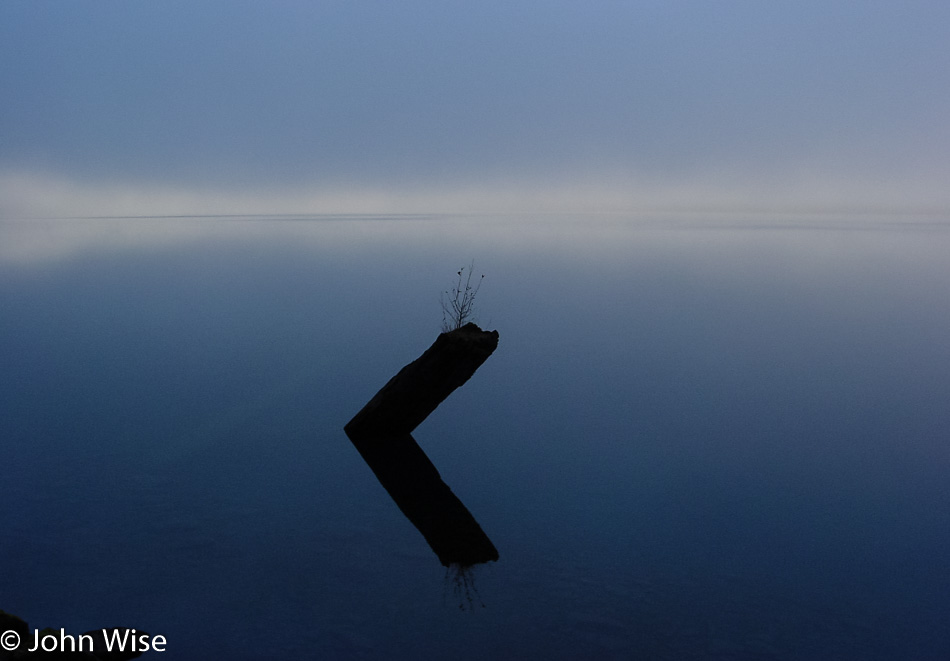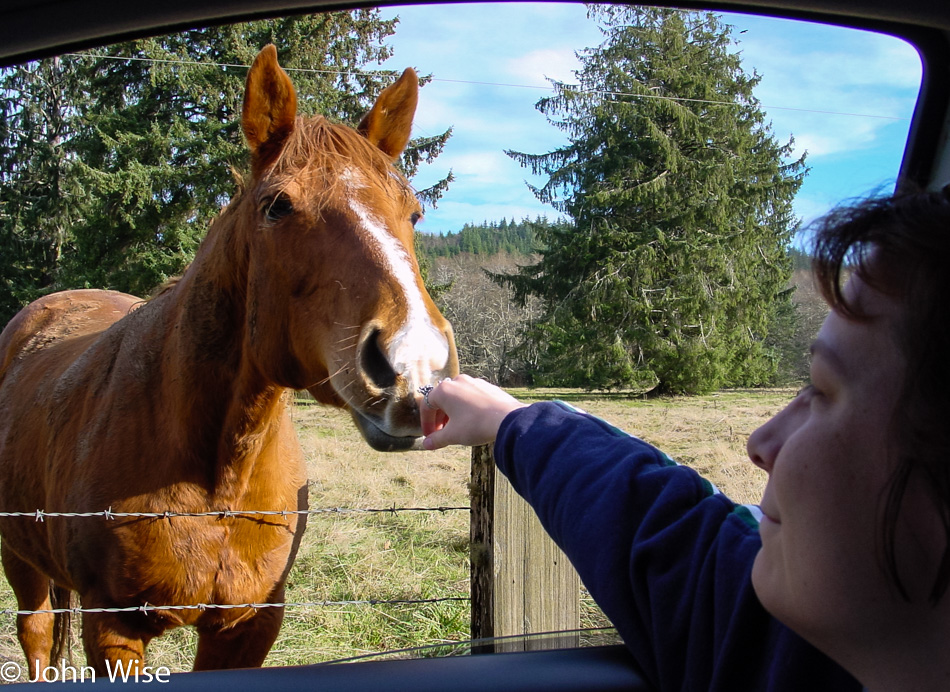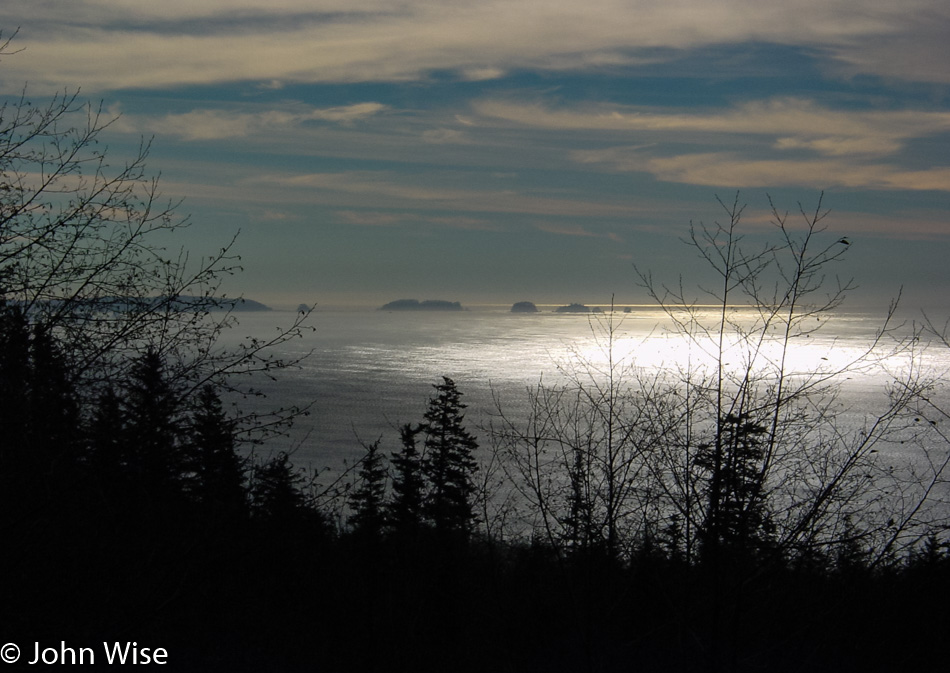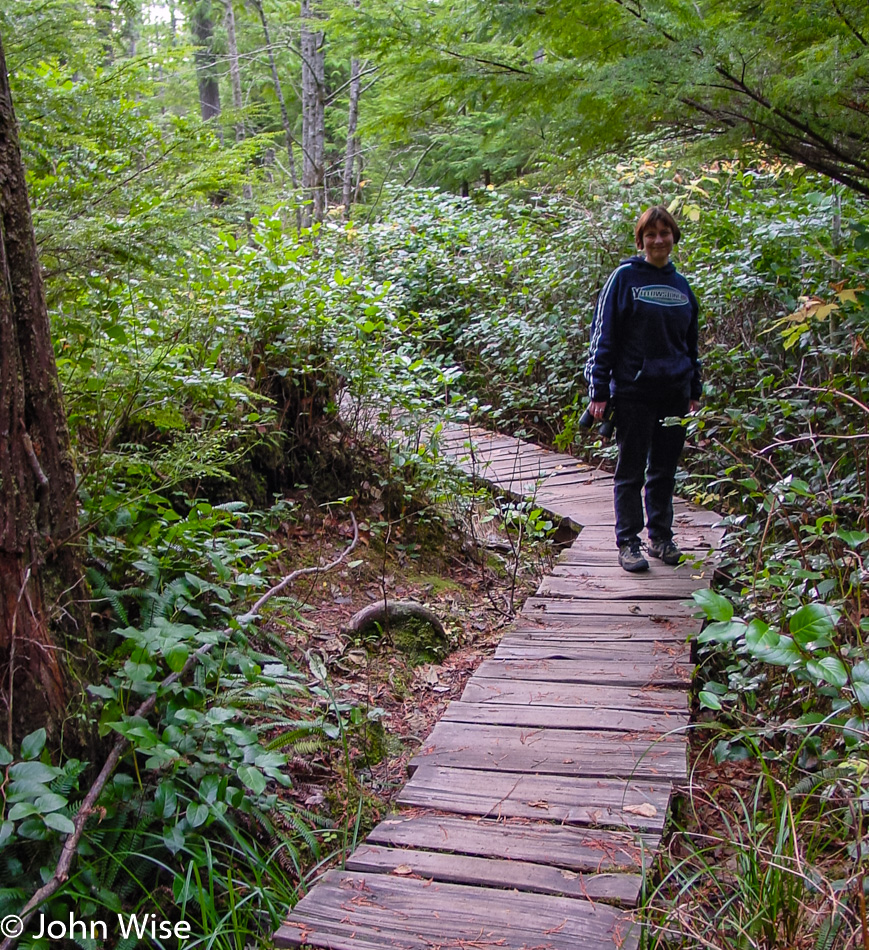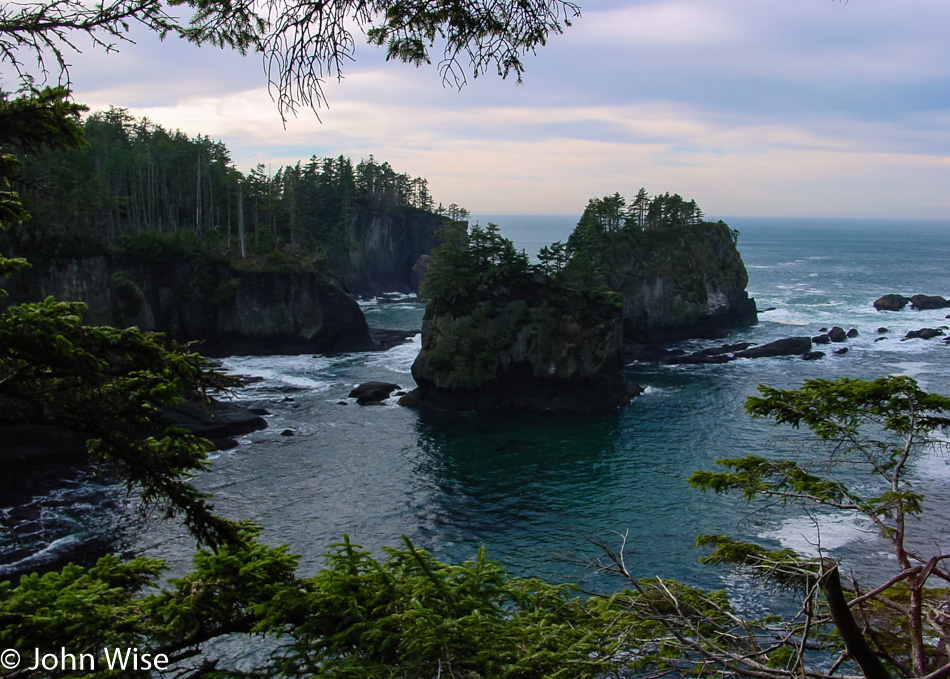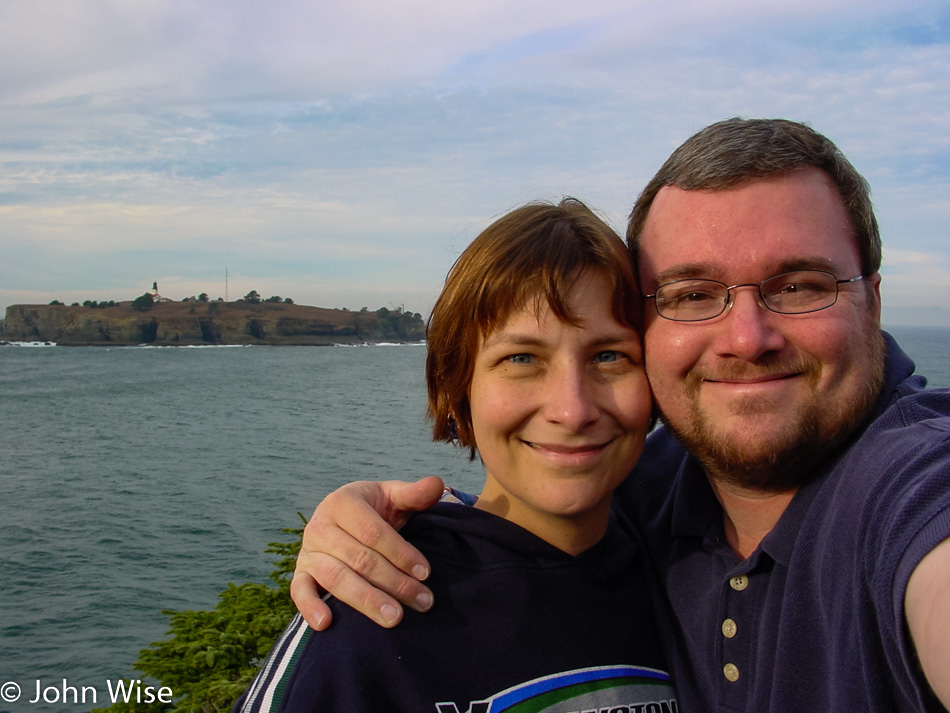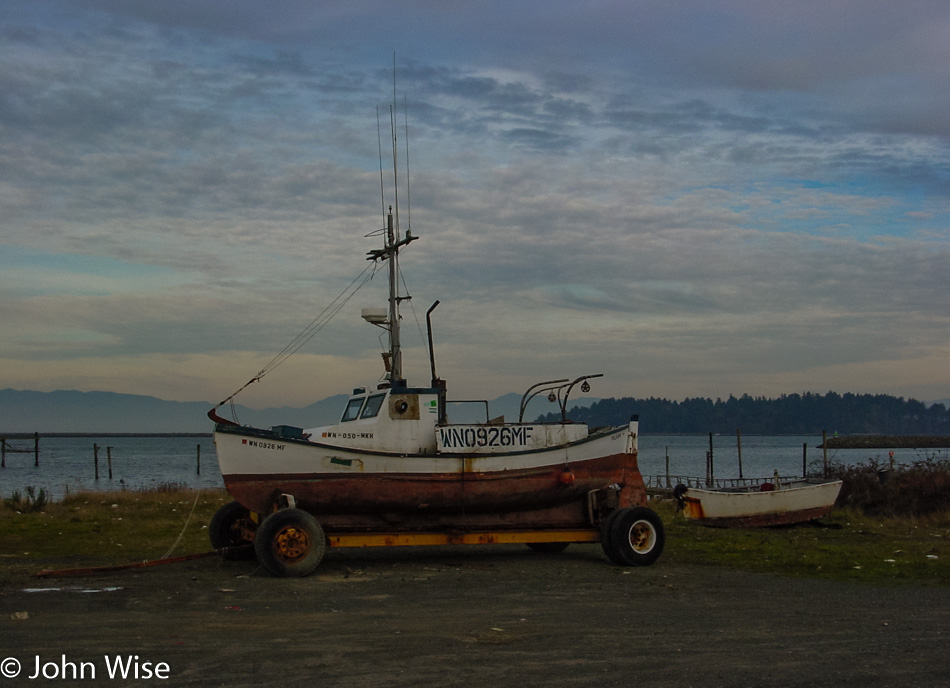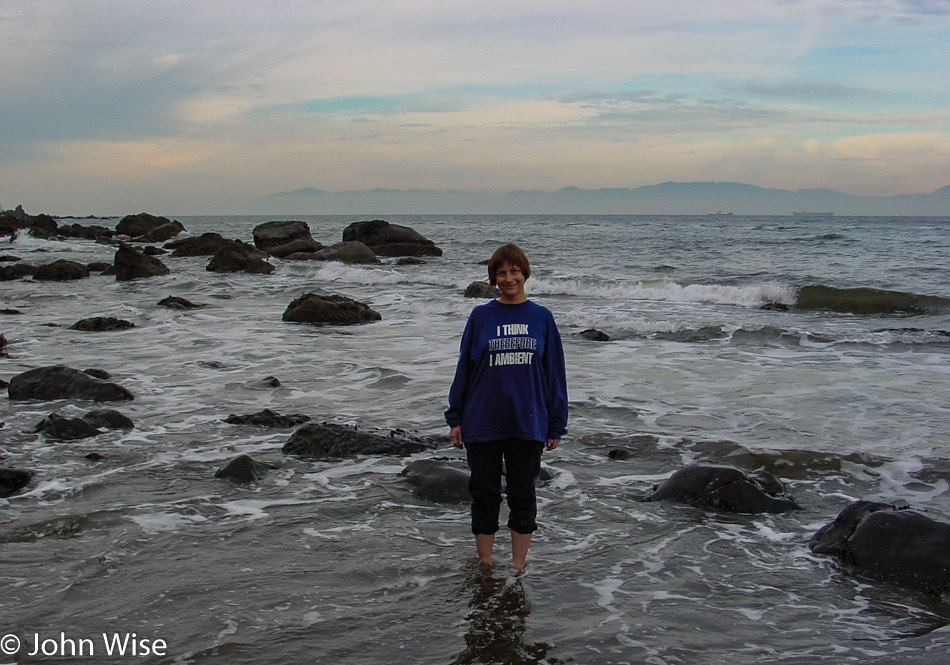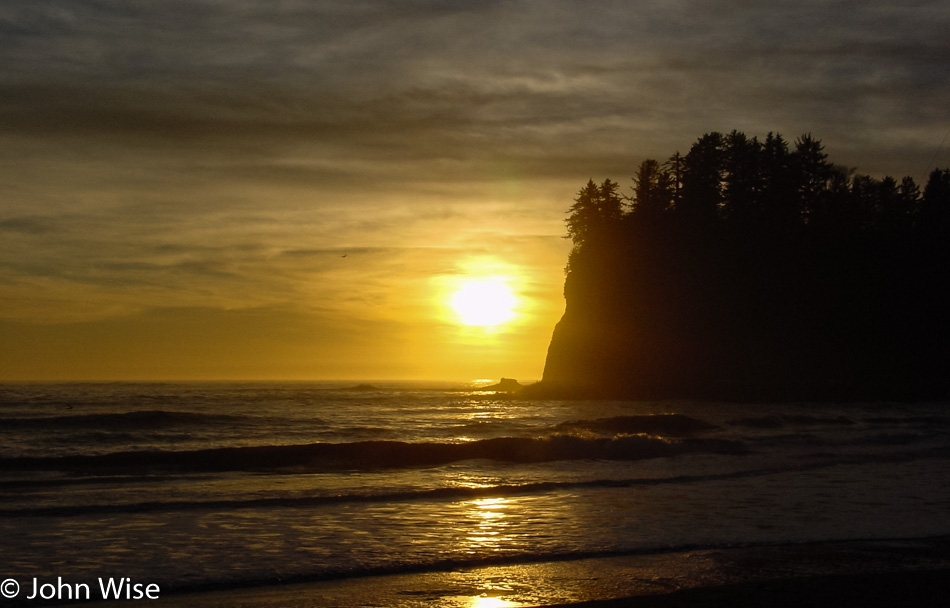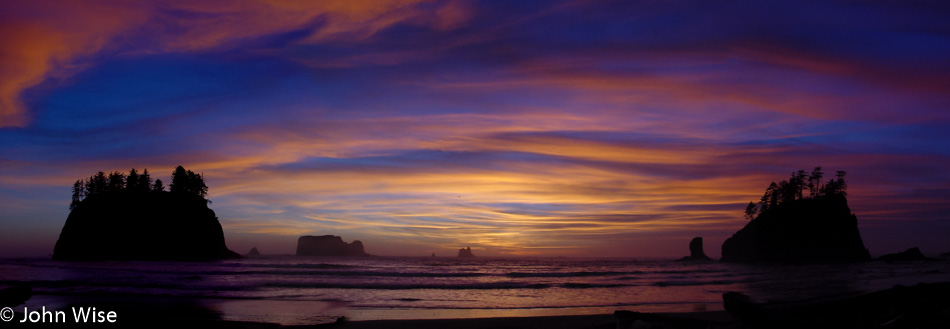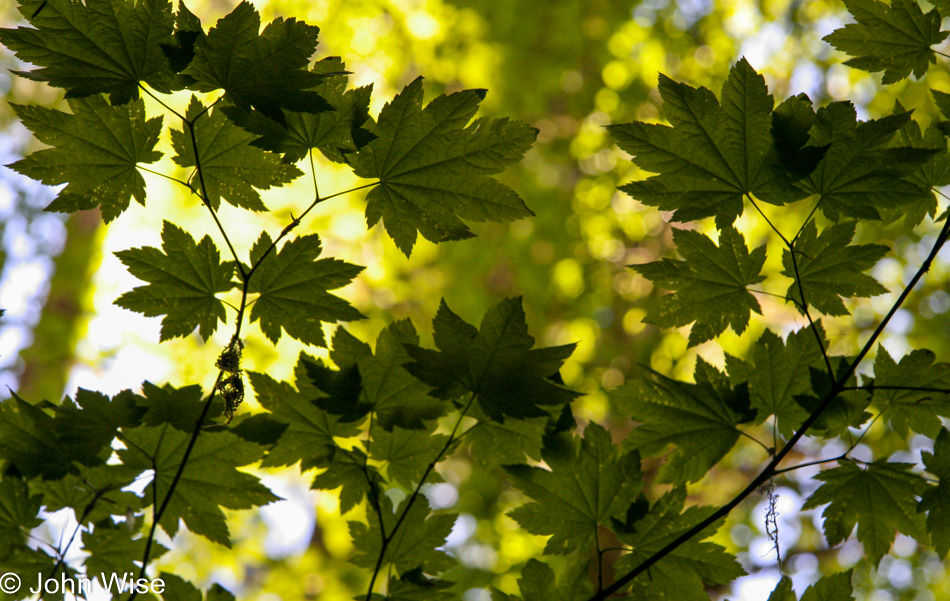
Disclaimer: This blog entry wasn’t written until 17 years after the trip. It should be noted that this was a huge mistake to have not written it way back when. Sometimes, after writing so much about other days, it happens that at the time directly after the trip (or even during), I convince myself that the details are not that important. Years later, these details are that important, and pulling them out of foggy memories is difficult. The photos help and often leave clues, and then Caroline’s memories are usually far clearer than mine. With that said, here goes.
I might just have to concede defeat: it’s now been two years since I struggled through the day prior to this one, as any semblance of story is so far away from anything I remember. I could write a generic story about the love of nature and how my mother-in-law Jutta responded to these deeply immersive journeys into America but there would be no real personal details that harken back to these days.
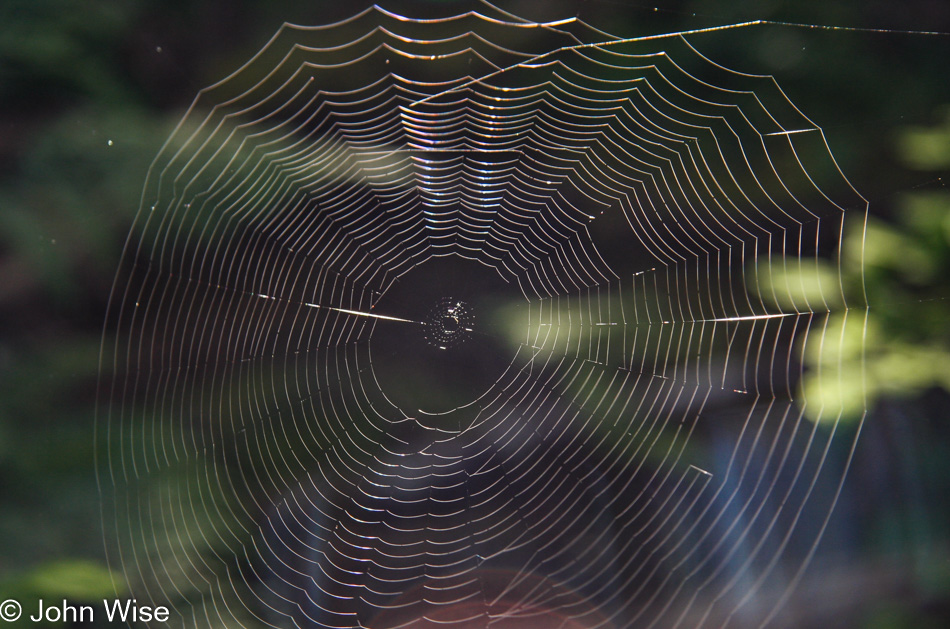
This is the tragedy of not following up in a timely manner with something that, at the time, just wasn’t imperative. I feel like I had been a spider, and I spun out a single thread, and then days later, on the verge of starvation, I’m wondering, how’d I go wrong? The answer is simple: always do all you can to capture not just your meals but your memories, too.
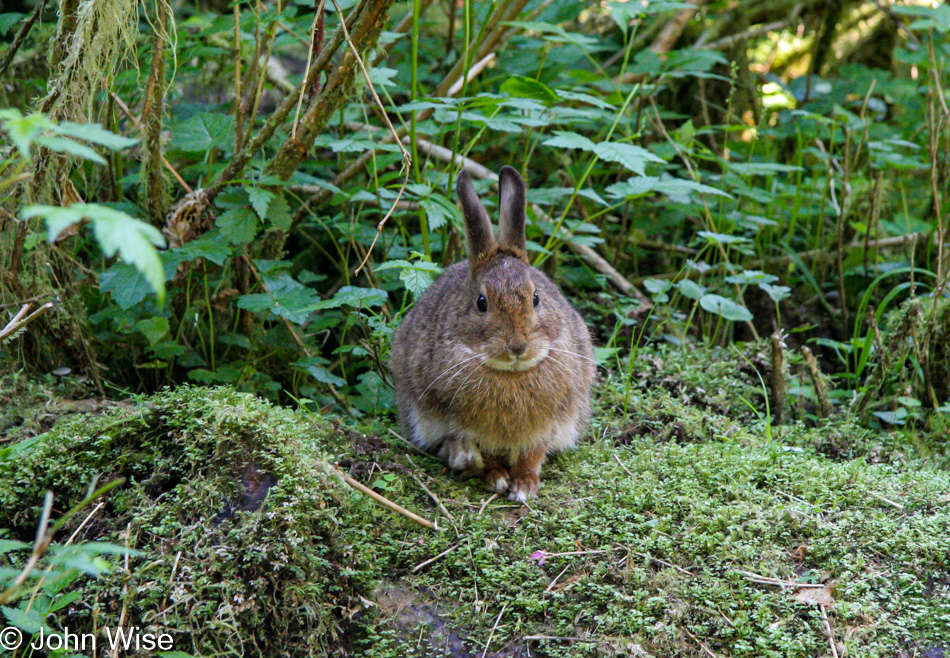
Back in 2005, I did write something, maybe 100 words if I’m lucky. Part of that original text was that we’d stayed in Forks, Washington, overnight, and from the itinerary I still have, I can share that we paid $46 for a night at the Town Motel. I also included that we stayed this far north so we could visit the Hoh Rainforest first thing today before heading over to Olympic National Park; actually, the Hoh Rainforest is part of Olympic National Park.
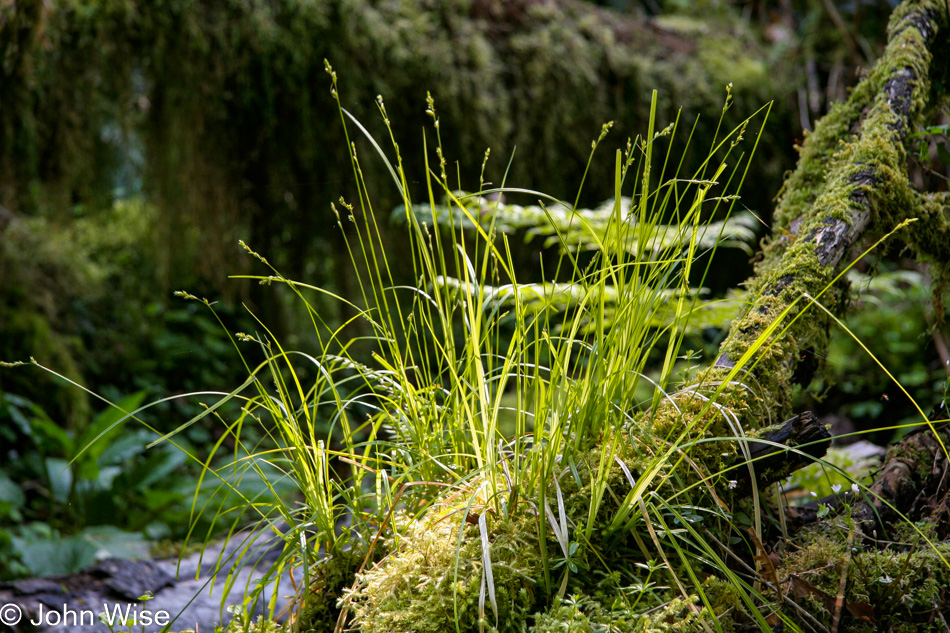
While I also wrote of the rabbit and some elk hoove prints, I didn’t mention that we’d seen elk crossing a river; photos are below.
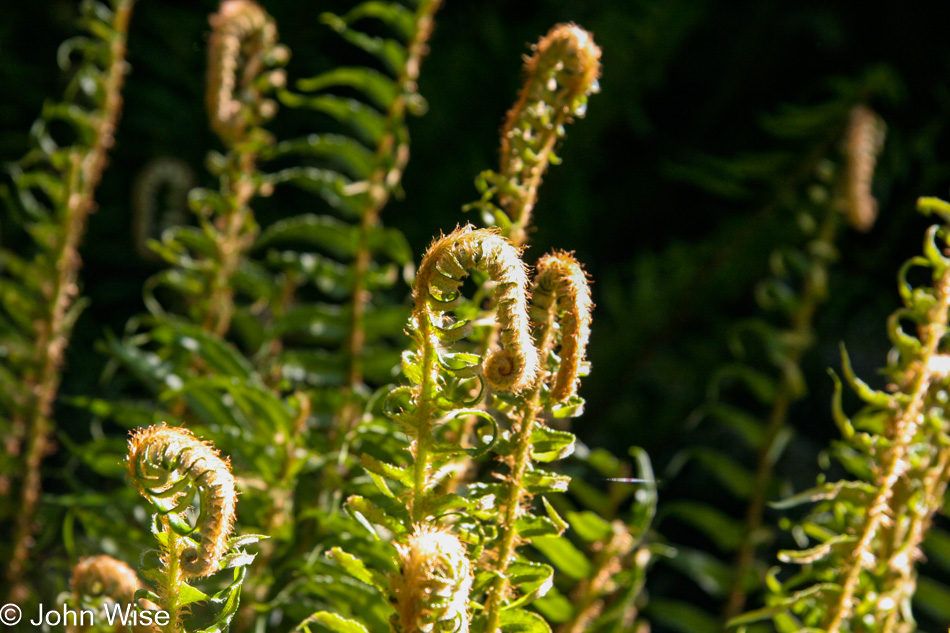
Over the years of capturing so much imagery of the United States shared with Caroline, Jutta, and others, I’ve tried to advocate that others should be blogging, too. By now, I cannot believe it’s not a national directive with studies showing how meaningful, rich details from our past can bring us back to the experience as though they happened yesterday. Back when Caroline and I ventured out driving from Arizona to Maine and down to Louisiana before heading home, we took great notes, and while we took a minimal number of photos due to the expense of memory cards during those nascent days of digital photography, I was able to craft a narrative compelling enough that I know more about that adventure than I ever will about this one that occurred five years later.
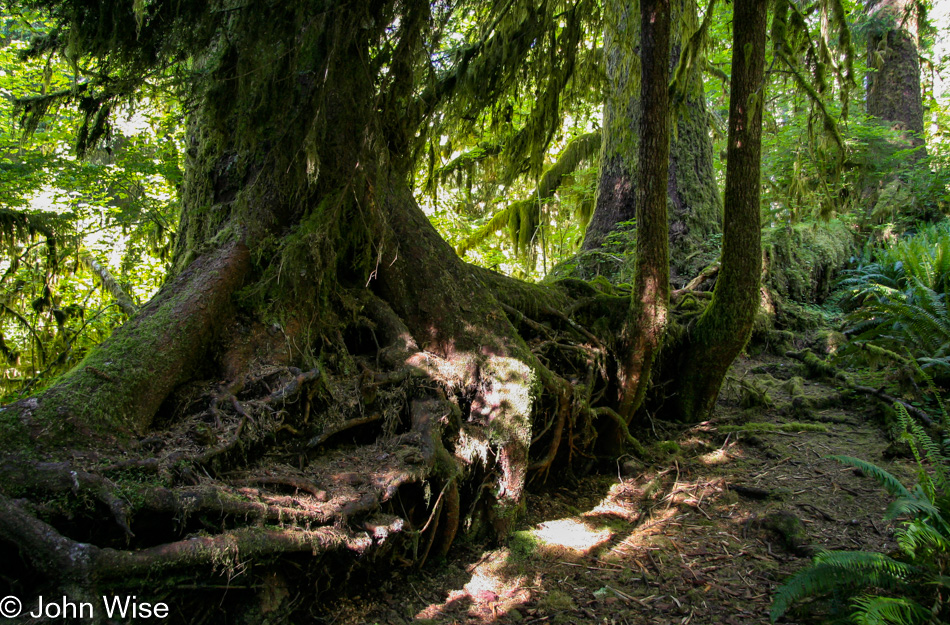
Now, fortunately, Caroline and I have been on the Hoh Rainforest trail before, along with the Quinault Rainforest part of the park out here on the Olympic Peninsula, so we have some strong memories about a lot of what’s being seen here, but those tiny details that bring back the laughter of a mother-in-law, wife, kids nearby, or the sound of the forest itself, those things regarding these specific days have drifted on.
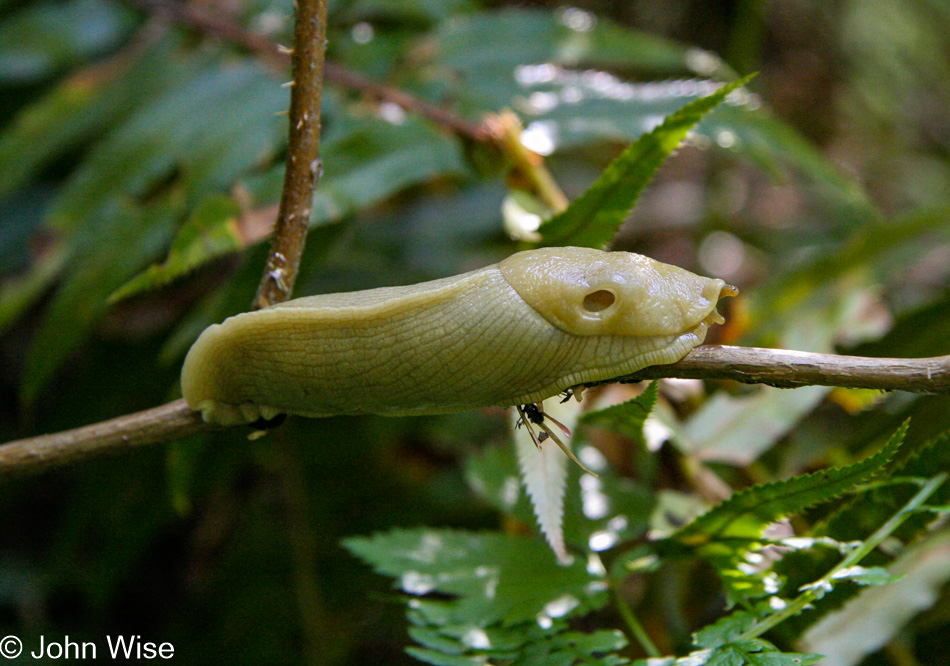
There’s no way to bring any of it back. Even Caroline is unable to add further detail. In any case, the mighty banana slug will always be mighty in our eyes.
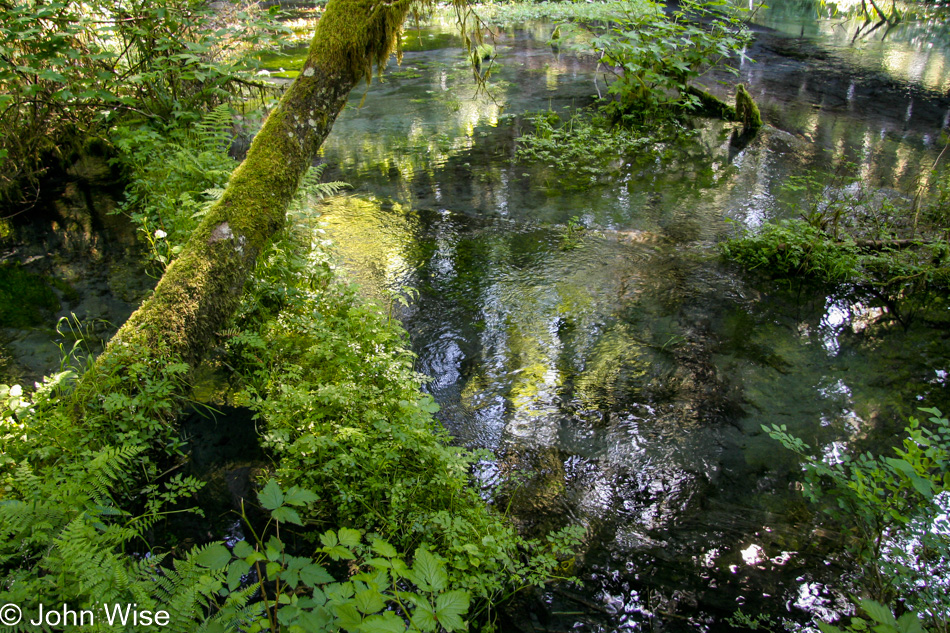
Sure, these scenes are gorgeous; that’s why we thought to bring Jutta up this way, though a 16-day road trip was going to be grueling.
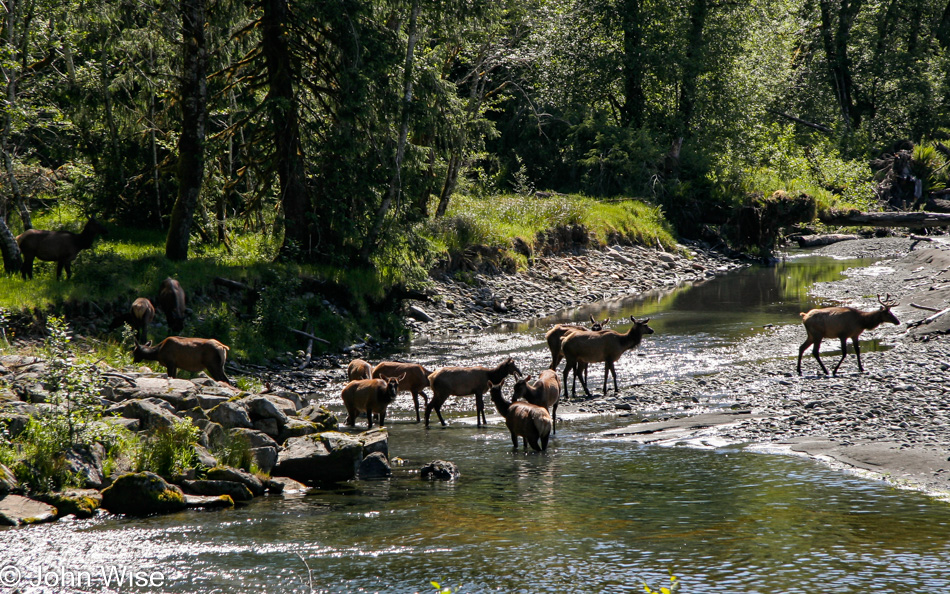
There are moments on our journeys when we encounter situations when not only would it be impossible to see anything similar in Germany, but even if Caroline and I had seen something remotely the same on a previous excursion, we’d still be here in astonishment right now. We see lizards, coyotes, ants, and too many pigeons in Phoenix, while Jutta might see pigeons in Frankfurt. Nature enchants all of us, and I’m sure it did this day, too, but did Caroline or her mom utter something noteworthy? I wish I remembered. Seen here are Roosevelt Elk crossing the Hoh River.
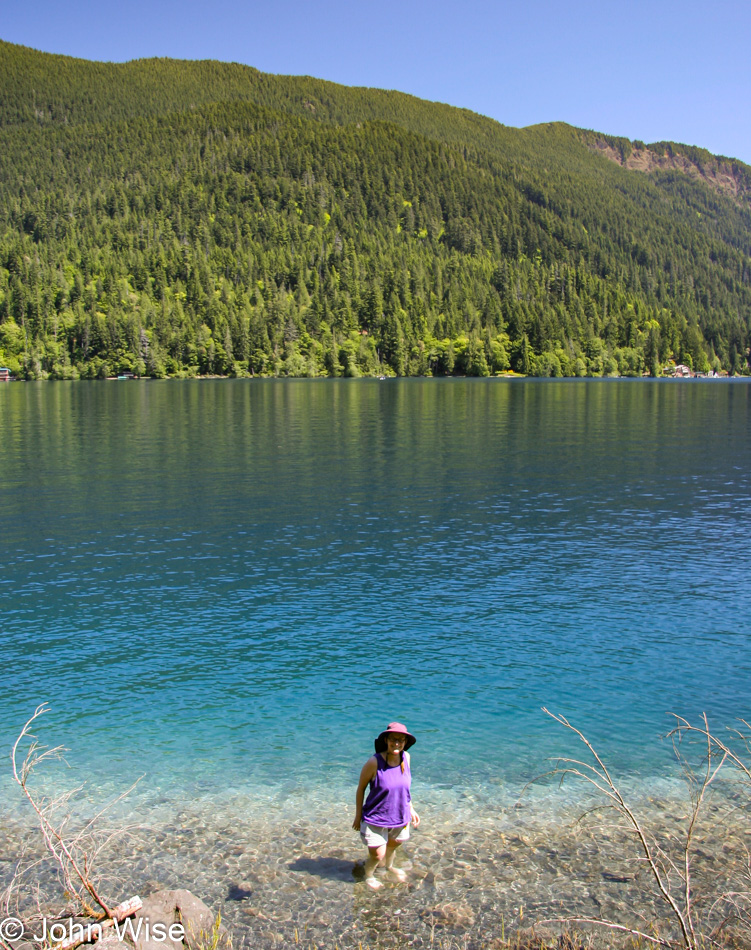
Caroline is cooling her feet in Lake Crescent; I only know this because the next photo shows us heading into the mountains to visit the main area of Olympic National Park.
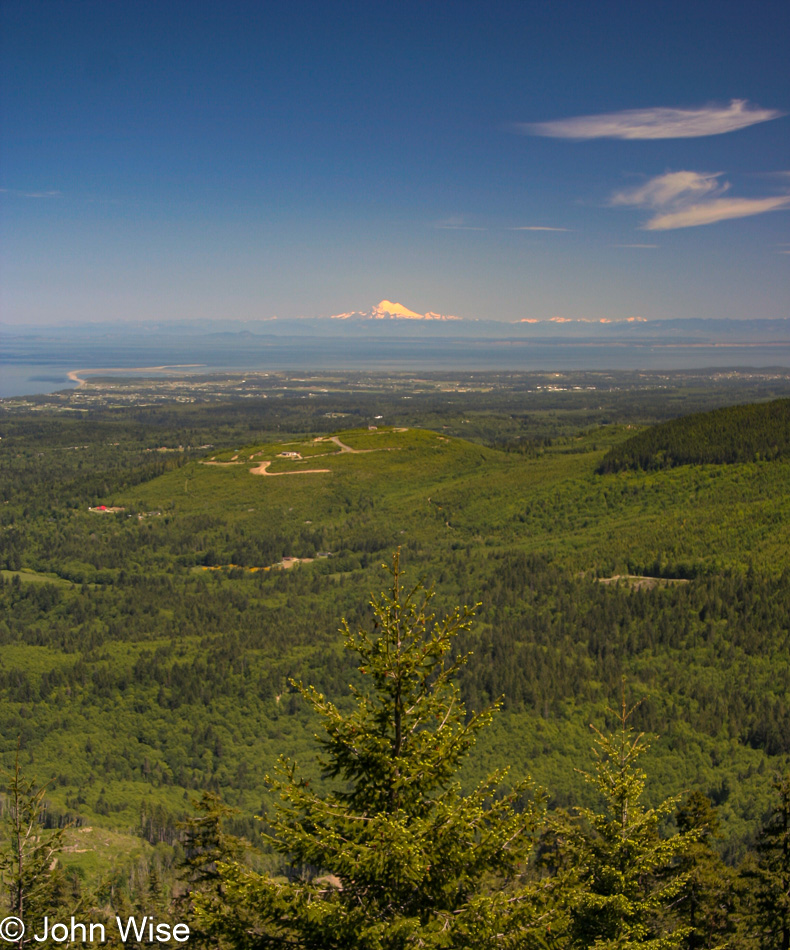
Mt. Rainier is in the distance, meaning this is an incredibly clear day as that mountain is about 120 miles away as the crow flies.
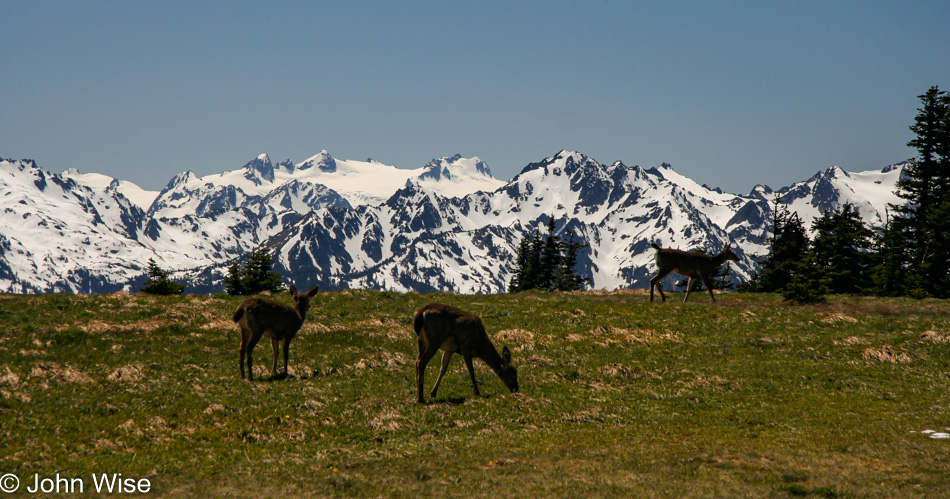
Up on Hurricane Ridge.
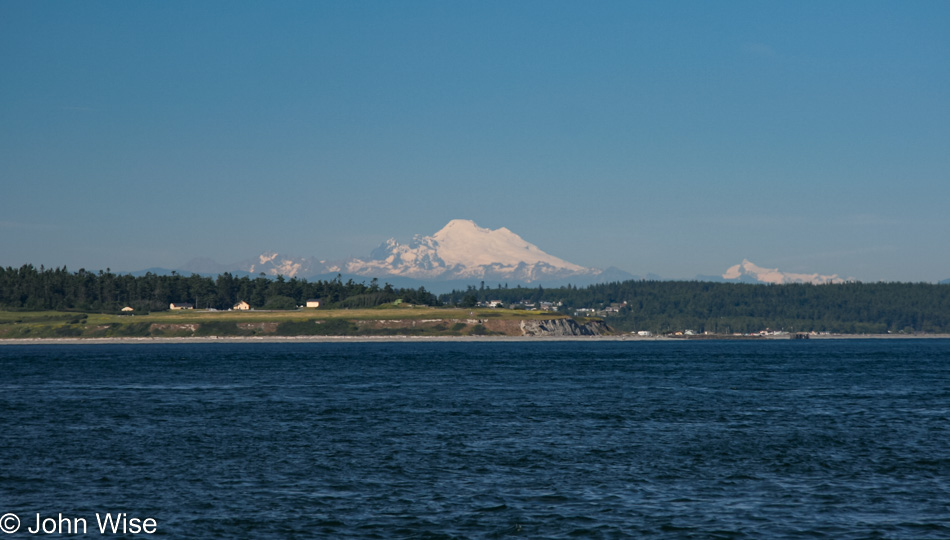
Thanks again to the old itinerary; I’ve been reminded that we are at Port Townsend taking the ferry to Fort Casey on Whidbey Island. Once there, the plan was to go north to Fidalgo Island and catch another road east up to North Cascades National Park, a place neither Caroline nor I have ever been to.
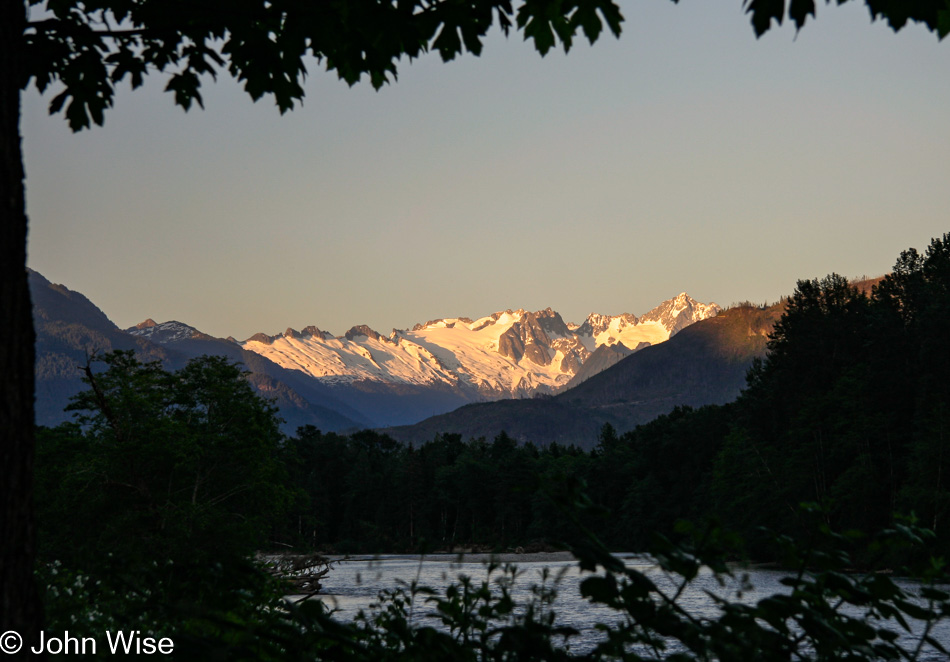
We are staying in the Eagles Nest Motel in Concrete, Washington; the name wasn’t lost on my mother-in-law. Back then, it cost us $55 in cash to stay, but my search of the place shows it shut down around 2014.
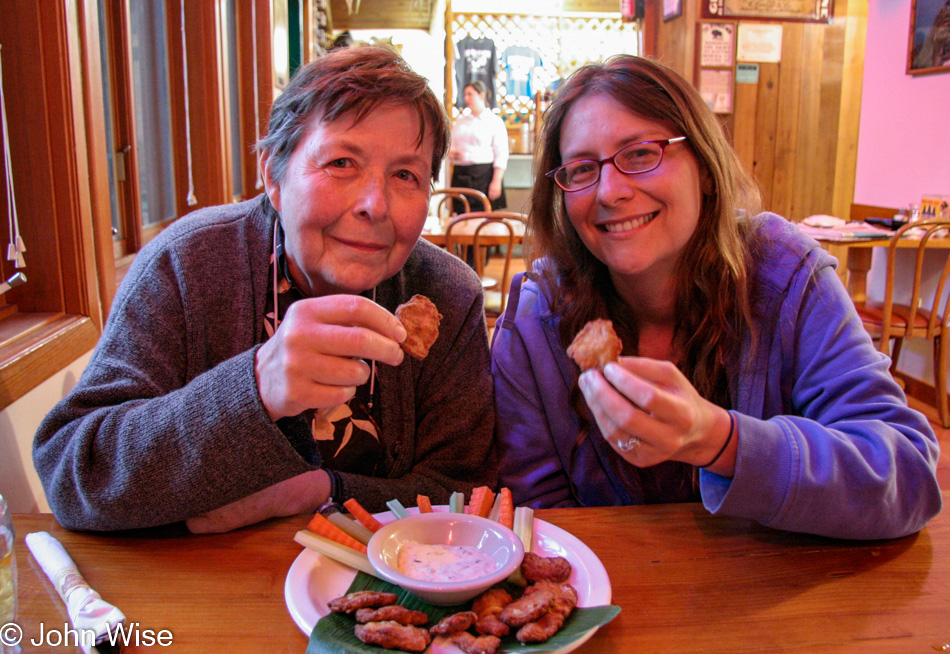
Now, this is one of the seriously strong memories I’ve held on to; Caroline and her mom are about to try Rocky Mountain Oysters (bull testicles), and while Jutta thought they were just okay, Caroline grimaced a bit as she chewed into the soft piece. After a few bites, she also declared that eating testicles is no big deal. As for me, I was not up for a food challenge and instead played chicken; plus, I’ve never liked organ meats. And that’s all I’ve got.
